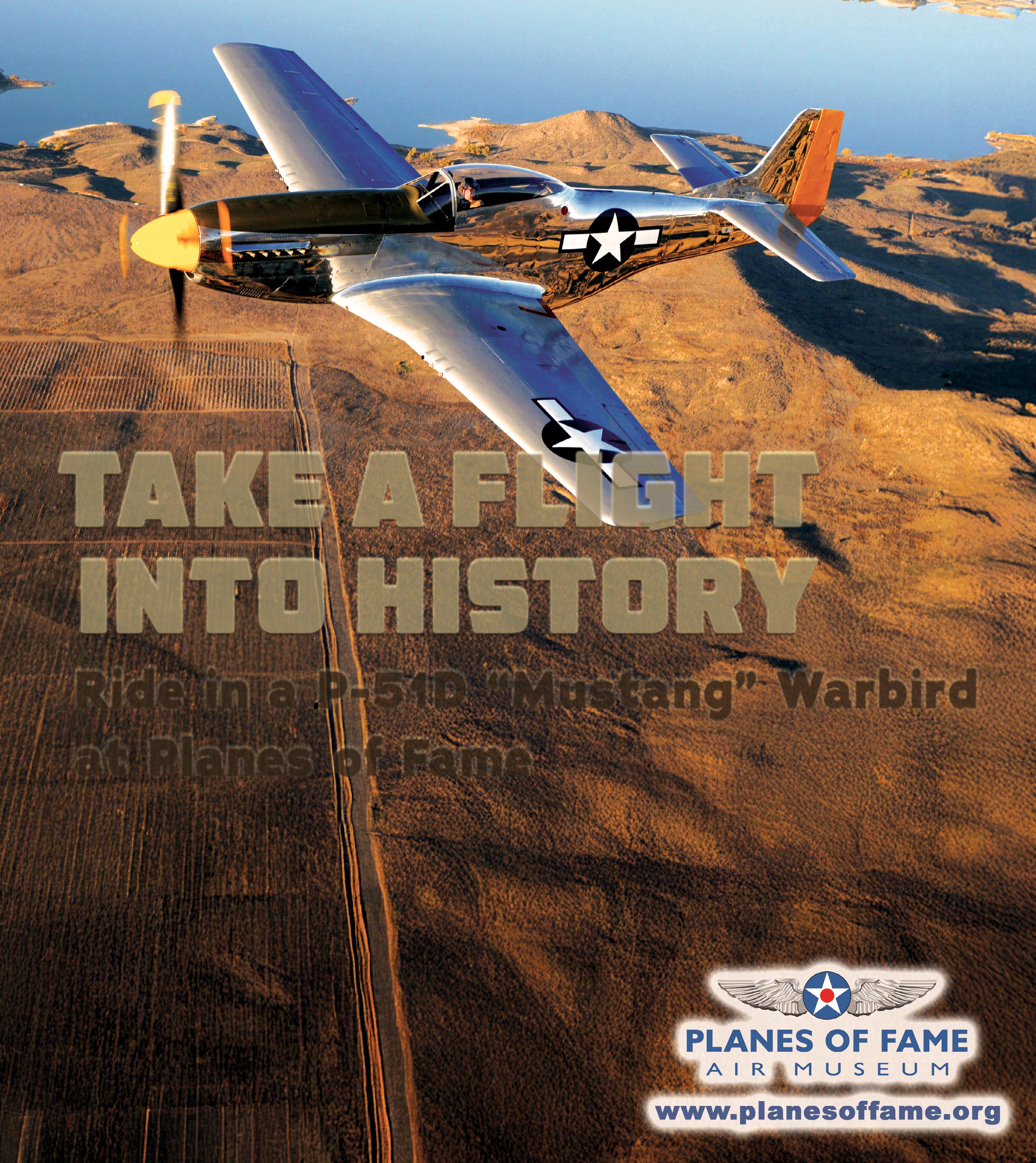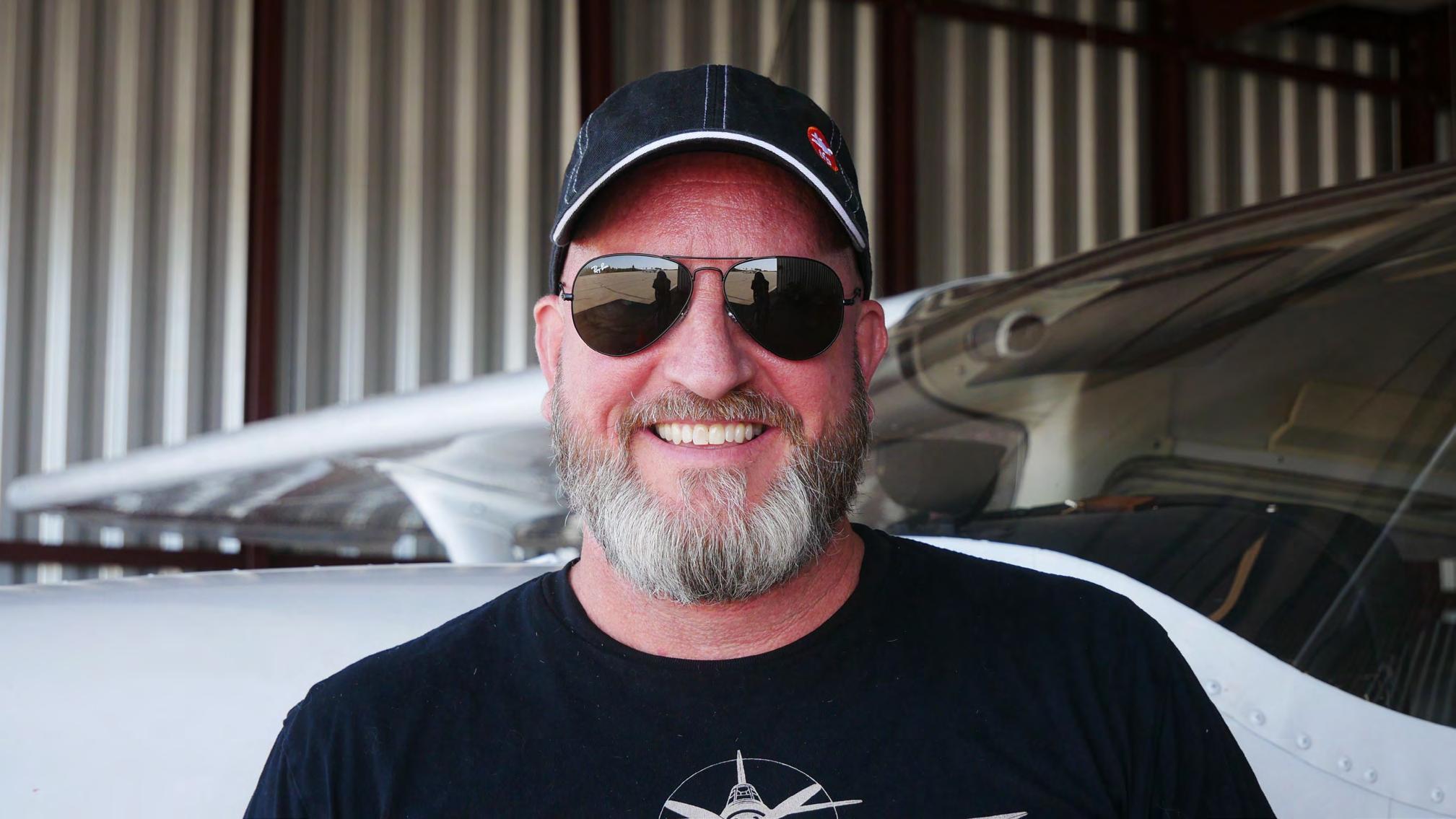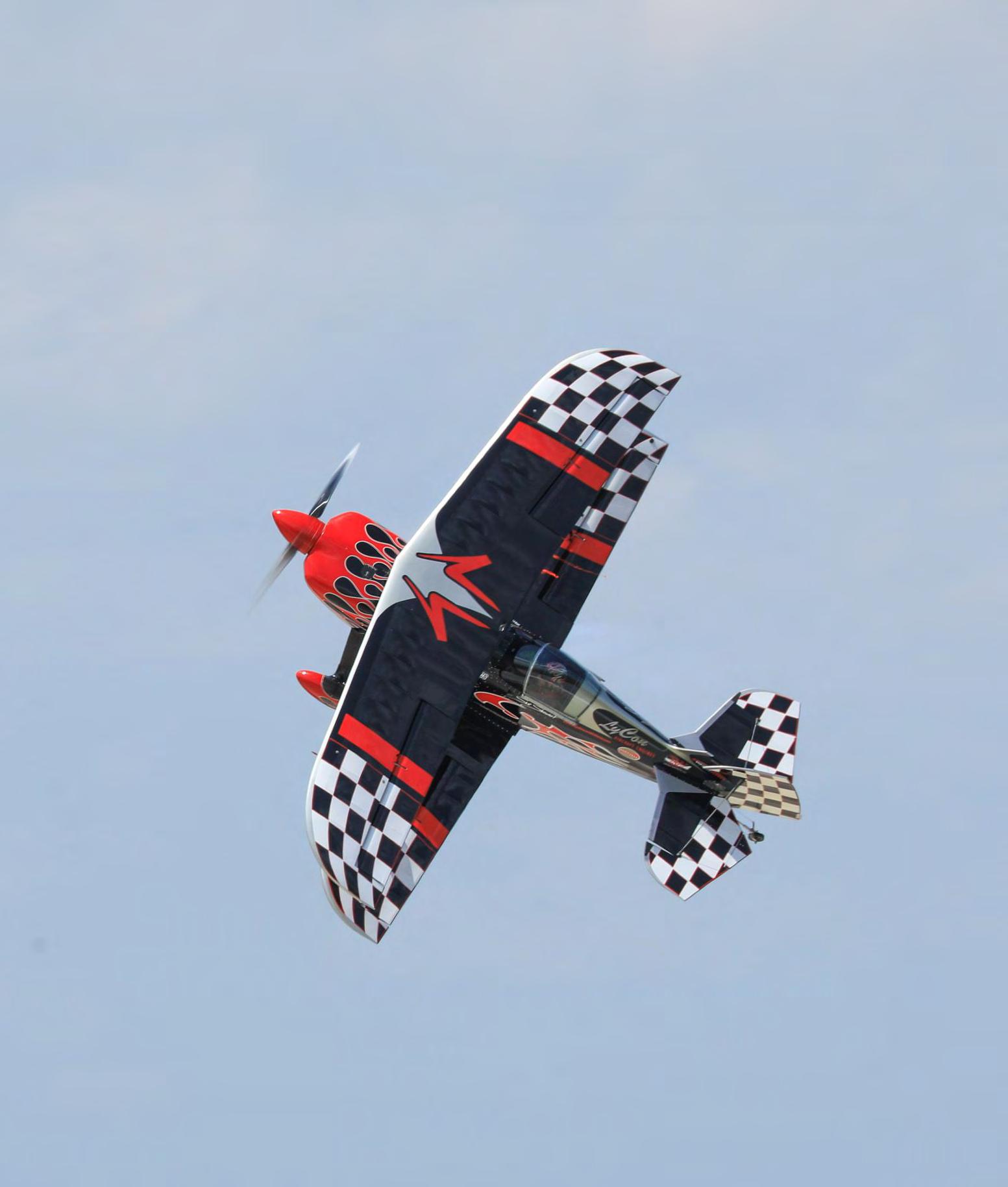

October 2025
Building up great flight schools for the next generation.

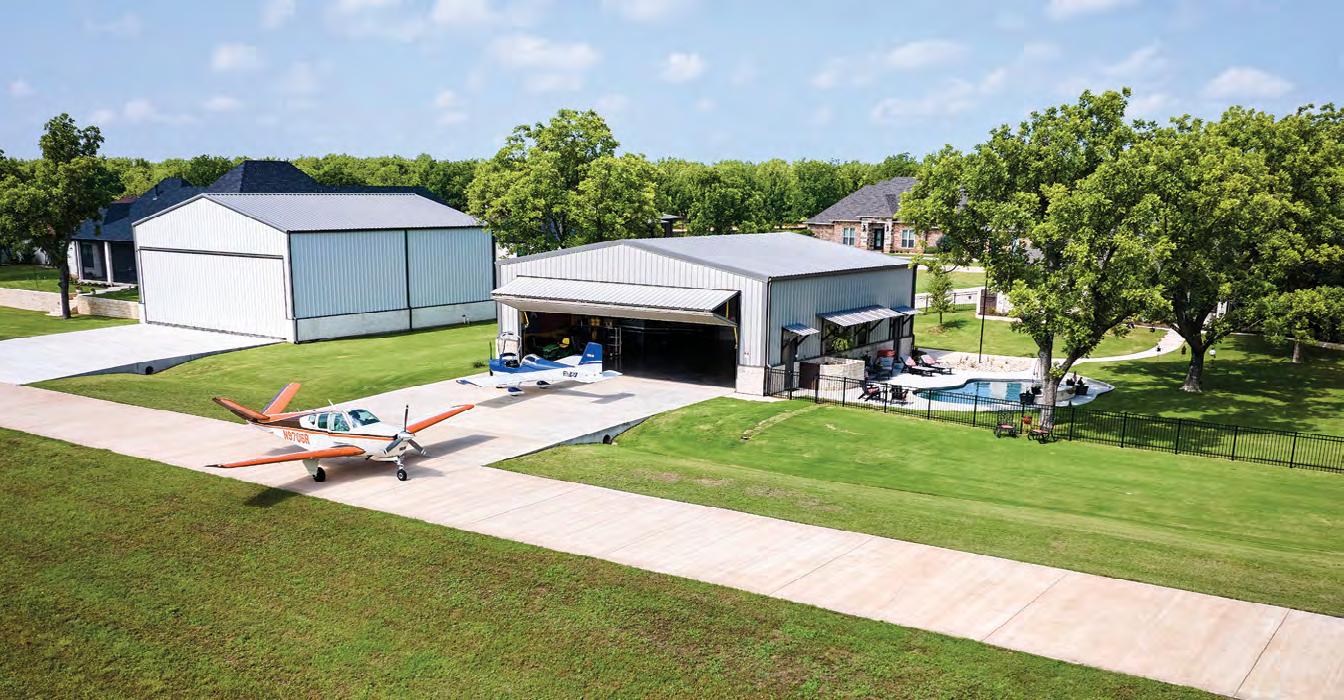

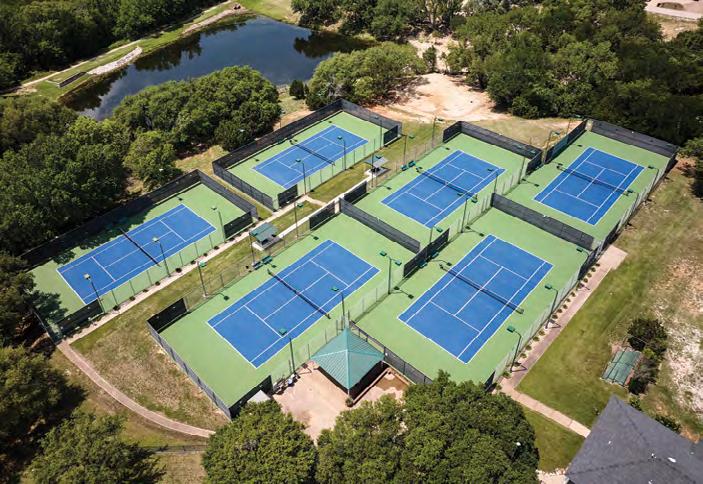



October 2025
Building up great flight schools for the next generation.




To list your group’s event on a space available basis, please send your event notice with date, time, place w/city and state, contact name, and phone number to: Calendar, In Flight USA, P.O. Box 5402, San Mateo, Calif. 94402, or email vickie@inflightusa.com.
Note: Calendar includes only information available by our press date. Confirm the status before attending.
Oct 3-5: Pacific Air Show Huntington Beach, pacificairshowusa.com
3-5: California International Airshow Salinas, CA, U.S. Navy Blue Angels, F-16 Viper Demo Team, www.salinasairshow.com
3:5: Pacific Airshow Huntington Beach, Huntington Beach, CA U.S. Air Force Thunderbirds, Canadian Forces Snowbirds, pacificairshow.com
4: War Birds Over the Beach, Virginia Beach, VA, militaryaviationmuseum.org
4-5: Rose City Airfest, Tyler, TX Adam Baker Airshows, Commemorative Air Force, ExtremeFlight, www.rosecityairfest.com
9: Flight Path Museum LAX 30th Birthday Gala, Los Angeles, CA, flightpathlax.com/gala
10: US Aircraft Expo San Diego, Carlsbad, CA, usaircraftexpo.com/sandiego2025
10-12: San Francisco Fleet Week, San Francisco, CA, F-35A Lightning II Demonstration Team, fleetweeksf.org
11: Apple Valley Airshow and Car Show, Apple Valley, CA, www.applevalleyairshow.com
11: Culpeper Air Fest 2025, Culpeper, VA, Flying Circus Airshow, www.culpeperairfest.com
11: Apple Valley Airshow, Apple Valley, CA, applevalleyairshow.com
11: 26th Annual Corsicana Coyote Squadron Airsho, Corsicana, TX, Pearl Harbor Tribute, pyrotechnics, coyotesquadron.org/airsho
11-12: Air Dot Show Atlanta, Peachtree City, GA U.S. Air Force Thunderbirds, air.show/atlanta
11-12: Hammond Northshore Regional Airshow Hammond, LA F-22 Raptor Demonstration Team, Titan Aerobatic Team, hammondairshow.com
17-19: Wings Over Houston Airshow, Houston, TX, U.S. Air Force Thunderbirds, wingsoverhouston.com
17-19: Wings Over North Georgia Rome, GA U.S. Navy Blue Angels, Ladies for Liberty, LLC, wingsovernorthgeorgia.com
17-27: Haunted Hangar, Hiller Museum, San Carlos, CA, hiller.org
18-19: Central Coast Airfest, Santa
Maria, CA
18-19: Best Little Air Show in the World, Tallulah, LA, southernheritageair.org
18-19: Amigo Airsho Inc, El Paso, TX, F-16 Viper Demo Team, amigoairsho. com
25: Palm Springs Air Museum Car Show and Chili Cookoff, Palm Springs, CA palmspringsairmuseum.org
25-26: Air Dot Show Orlando, Orlando (Sanford), FL, U.S. Air Force Thunderbirds, air.show/orlando
25-26: Sea And Sky Airshow, Jacksonville Beach, FL, www.jaxseaandsky. com
Nov. 1: Hangar Talk and Flight of the Grumman F6F Hellcat and Grumman F7F Tigercat, Planes of Fame Museum, Chino, CA, planesoffame.org
1-2: Florida International Air Show
Punta Gorda, FL, U.S. Navy Blue Angels, F-16 Viper Demo Team, floridaairshow.com
1-2: Thunder Over the Sound: Keesler/ Biloxi Air & Space Show Keesler AFB, Biloxi MS, MS U.S. Air Force Thunderbirds, thunderoverthesound.com
7-8: Blue Angels Homecoming Air Show, NAS Pensacola, FL, naspensacolaairshow.org
7-9: Stuart Airshow, Stuart, FL F-35A Lightning, Demonstration Team, U.S. Air Force Heritage Flight Foundation, stuartairshow.com
8: Palm Springs Air Museum 29th Birthday / Veterans Day Air Fair, Palm Springs, CA, palmspringsairmuseum. org
15: Crystal Eagle Award & Scholarship Awards Dinner, San Carlos, aeroclubnocal.org
Dec. 5-6: Vintage Weekend Ocean Reef Air Show, Key Largo, FL, AnnouncerSolution.com, Commemorative Air Force, Doug Litton Airshows
13: Pappy Boyington & The Black Sheep, Palm Springs, CA, palmspringsairmuseum.org
19-22: Snowtopia, Palm Springs, CA, palmspringsairmuseum.org



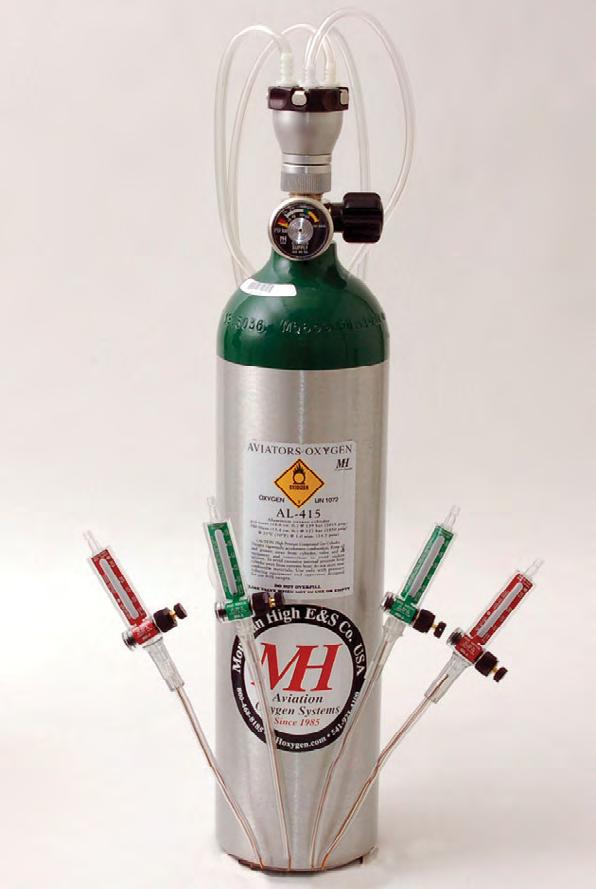


By Annamarie Buonocore
Here at In Flight USA, it is our pleasure to bring you great stories of businesses and organizations that are uniting the aviation industry and filling important niches within that industry. This month, we had the honor of interviewing Robert Rockmaker, the President and CEO of FSANA, which is the Flight School Association of North America. Founded in 2009, the organization offers a wide range of resources for flight schools, CFIs, and students. This is the story of how the organization was founded and the work it is currently doing to make a difference in the world of aviation.
In Flight USA: What is FSANA
and what are your goals with the organization?
Robert Rockmaker: The Flight School Association of North America was started back in 2009. It was started to help flight training schools to improve their businesses, increase safety, and increase the pilot population. Before FSANA was formed, there was no dedicated organization for the flight training industry. It filled a void. There are other organizations that touch on flight training; however, the industry did not have an organization dedicated to the flight training industry.
Flight schools should not attempt to determine whether a person can qualify for an FAA medical certifi -
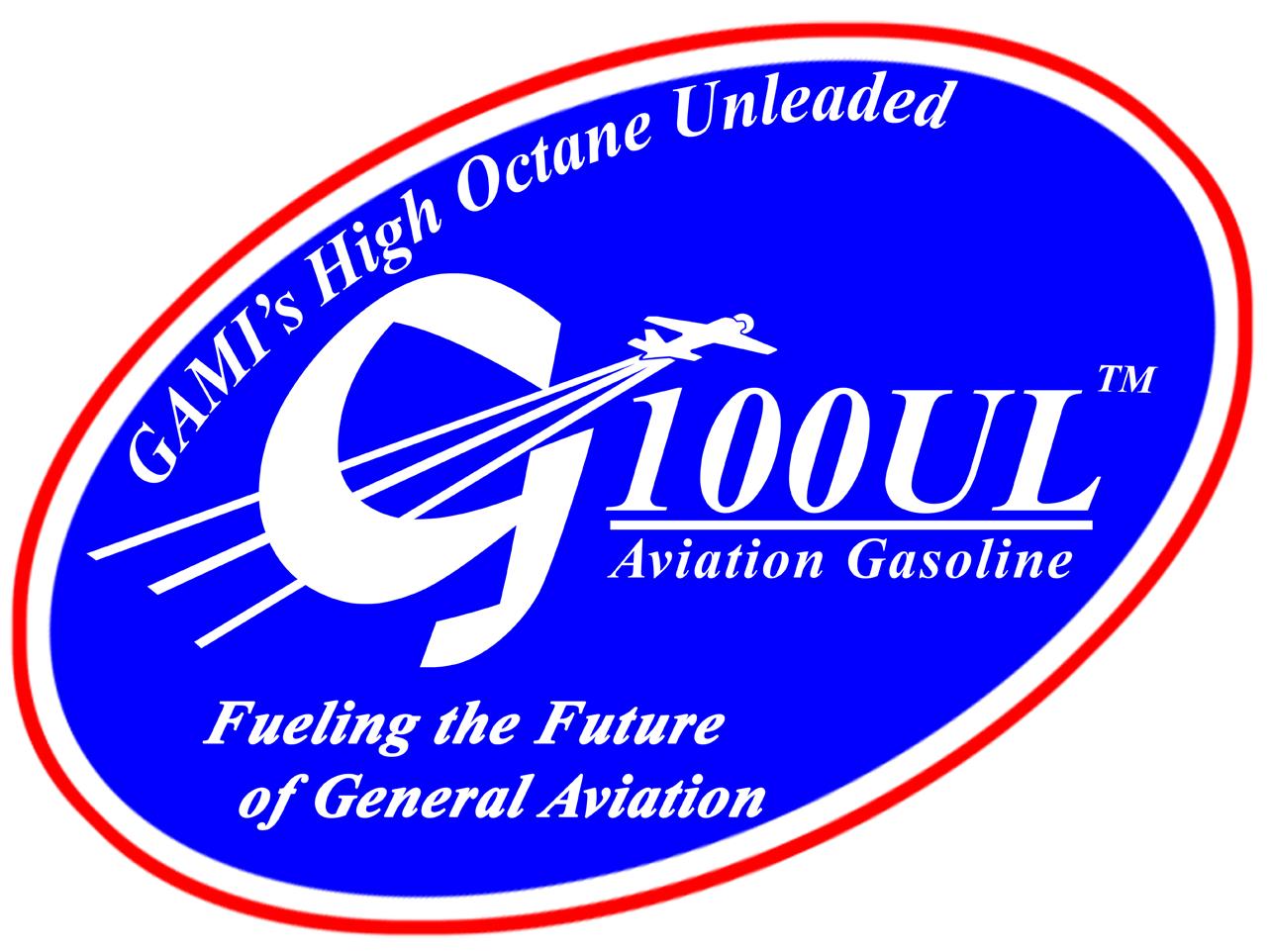
cate. We recently had a flight school call in for advice on a deaf applicant who wanted to learn to fly. There are several hundred deaf pilots who are currently certificated by the FAA. FSANA aided the flight school in preventing what could have been a major lawsuit.
IFUSA: How many members do you have and are all of your members flight schools?
BR: We are approaching 1,000 members. The majority of our members are flight schools. We also have suppliers who supply our flight schools. We have flight examiners, formerly known as Designated Pilot Examiners (DPEs).
IFUSA: You highlighted what you
do in a previous answer, but what are some compelling reasons a flight school should join your organization?
BR: We guide flight school owners, operators, managers, and flight instructors to various resources that


Continued on Page 9

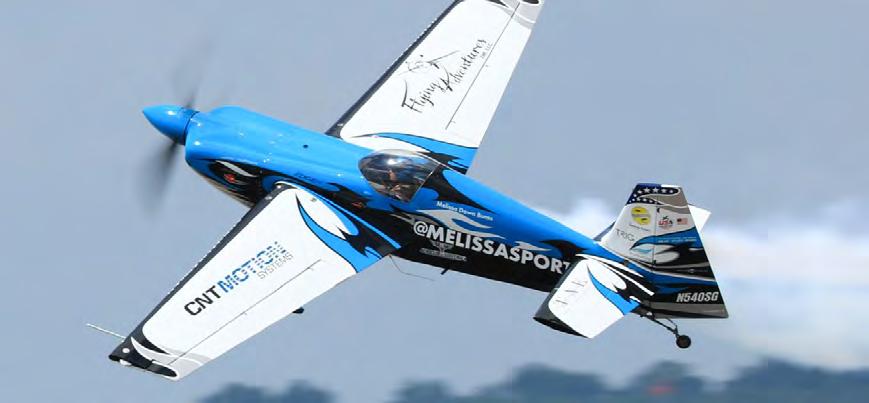
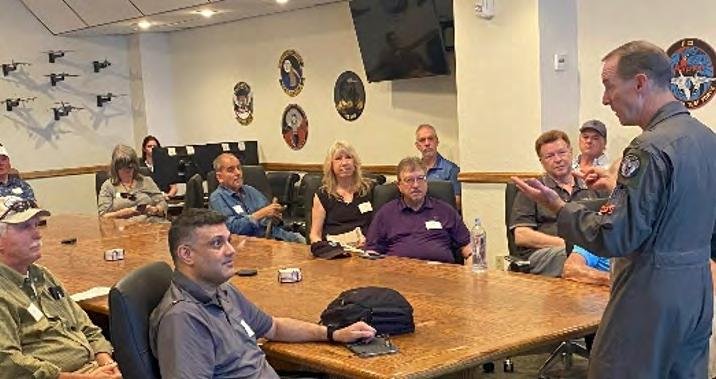




















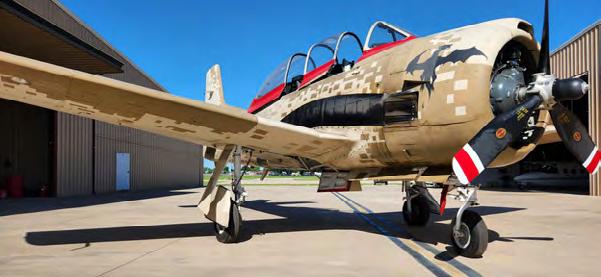
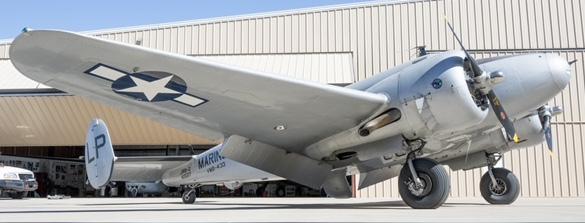




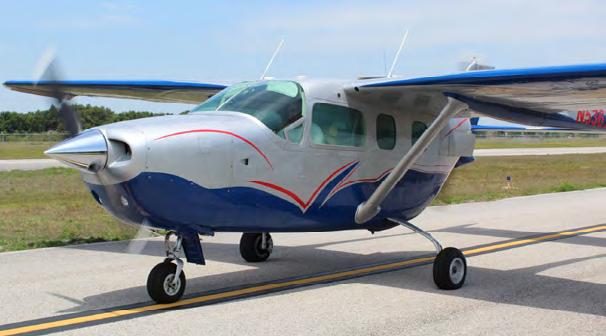

Publisher/Editor ...................................................................Victoria Buonocore
Managing Editor .............................................................Annamarie Buonocore
Production Editors ...................................................Matt DuBois, Steve Pastis
Associate Editors...... Paul T. Glessner, Nicholas A. Veronico, Sagar Pathak
Staff Contributors ..............S. Mark Rhodes, Larry Nazimek, Lea Buonocore
Columnists...Eric McCarthy, Ed Wischmeyer, Denise DeGregoire, Ed Downs
In Flight USA is published each month by In Flight Publishing. It is circulated throughout the continental United States. Business matters, advertising and editorial concerns should be addressed to In Flight USA, P.O. Box 5402, San Mateo, Calif. 94402 or by calling (650) 358-9908–fax (650) 358-9254. Copyright © 2008 In Flight Publishing.
In Flight USA is not responsible for any action taken by any person as a result of reading any part of any issue. The pieces are written for information, entertainment and suggestion – not recommendation. The pursuit of flight or any action reflected by this paper is the responsibility of the individual and not of this paper, its staff or contributors. Opinions expressed are those of the individual author, and not necessarily those of In Flight USA
All editorial and advertising matter in this edition is copyrighted. Reproduction in any way is strictly prohibited without written permission of the publisher.
In Flight USA is not liable or in any way responsible for the condition or airworthiness of any aircraft advertised for sale in any edition. By law the airworthiness of any aircraft sold is the responsiblity of the seller and buyer.
Granted, “Dinner with Grandma” does not sound like the typical bonehead adventure this column typically starts off with that can lead to a learning experience. But then again, this was no “milk and cookies for the grandkids” type of Grandma. In fact, if called “Grandma,” the family kids would be quickly rebuffed and told to use a familiarized version of her last name. Born before the Wright Brothers flew; this lady was an avid aviation fan. She served the Chief of Staff for a powerful Senator during WWI, took photographs of the Douglas World Cruisers at Clover Field (Santa Monica Airport) in 1924 (now part of a collection on display at the National Air and Space Museum in Washington DC), toured Europe following my mother’s participation in the 1936 Berlin Olympic games (fencing), moved to Honolulu, Hawaii, to avoid the upcoming European war, witnessed the Pearl Harbor attack first-hand as a civilian employee at Wheeler Field, Chartered a Piper PA-20 to fly over an erupting Kilauea volcano to take 8mm home movies, convinced Pan American Clipper crews to let her ride in the cockpit (passengers were too dull) when flying back and forth to Hawaii and became an active journalist until her passing at age 95. Bottom line, this was a fun “Grandma” to fly with!
It should, therefore, come as no surprise that “Grandma” quickly accepted this writer’s invitation to join me for dinner at a picturesque California coastal airport, about a 45-minute flight up the coast in my 1955 Piper PA-22 Tri Pacer (considered well equipped at the time) from my home base in Van Nuys, Calif. Departing just after sunset, my “copilot” reminisced about a friend who had been a crewmember on the Airship USS Macon (ZRS-S), which crashed along this same coastline in 1935. A fine dinner was followed by a visit to the Flight Service Station (located at the airports in those days) to check the return weather. All good, excellent visibility with only a high layer of clouds that would do no more than block starlight.
Given the new moon, it would be a dark, but safe flight home. Departure would have us crossing the beach immediately after take-off and then over the Pacific Ocean. A normal run-up was followed by a predictable take-off into the darkness. The beach and Pacific Ocean passed underneath us almost immediately as we climbed on runway
heading. The darkness was somewhat disorienting, so I initiated a gentle left turn to reestablish contact with the lighted shoreline now slightly behind my flight path. Anxious to get my bearings, I swung my head sharply to the left, looking for coastal lights. Instantaneously, the plane snapped to the right and the nose pitched down. The immediate conclusion was that for some inexplicable reason (fearfully… a structural failure?), I had just lost complete control of my airplane at less than 500 feet above the water.
In a desperate effort to get some clue as to the attitude of my plane, I swung my head to the right trying to locate anything visually that would help. But in doing so, my eyes caught the attitude indicator, which showed I was still in a gentle turn to the left. Training kicked in and I realized I had become a victim of spatial disorientation (vertigo) and that I MUST lock onto my instruments no matter what my kinesthetic senses were telling me. The sensation of being out of control continued until the shoreline came into view and my brain, visual cues and instruments all came into agreement. It was only then that I noticed my Grandmother’s hands were on the controls, having sensed something was wrong. “Vertigo?’ she asked. “Yup” I responded and that was the end of the conversation. The flight home was great, with the lights of the Los Angeles basin acting as artificial daylight. So, what really happened? Grab your copy of the Aeronautical Information Manual (AIM) and look up Chapter 8, “Medical Facts for Pilots.” Under the subchapter of “Illusions to Flight,” you will find the topic of “Coriolis Illusion.” Described as “abrupt head movement while in a prolonged constant rate turn,” this form of vertigo is further identified as “the most overwhelming of all in flight illusions.” Yes, I had succumbed to the “biggy” of vertigo experiences, less than 500 feet above the surface in pitch darkness. Yet, it was, by any standard, a clear, VFR night. Vertigo, referred to in the AIM as “Illusions to Flight” are not just limited to being in IFR conditions. There are many circumstances that can cause you to become “horizon impaired,” a very bad thing for a species that is dependent upon knowing where earth center is relative to a visual horizon. Airplanes can disrupt that needed data, often occurring when the horizon is obfuscated
Continued from Page 6
by darkness, low visibility, flying into the sun on a hazy day, or low azimuth sunlight “flickering” through a rotating propeller. But that is not all you will find in Chapter 8 of the AIM.
A quick read of this short chapter covers a wealth of information related to the physiology of flight. Remember the “Three Hour Beer” in the written exam… yup… Chapter 8! And how about that silly written test answer about the effect of CO Poisoning resulting in a “loss of muscular control?”
AIM Chapter 8 tells you the truth. The effects of CO poisoning are similar to hypoxia, a loss of oxygen in the blood, resulting in severe headaches, drowsiness, and dizziness. This writer can verify that AIM description, having had the experience firsthand. Subjects like, “The Effects of Altitude,” “Hyperventilation in Flight,” “Stress,” and “Vison in Flight” are also covered. Did you know that while supplemental oxygen for the PIC is not legally required until flying above 12,500 feet for more that 30 minutes, night vision can be adversely affected at altitudes above only 5,000 feet MSL? While many look to
for many safety-related acronyms, the one that stands out in AIM Chapter 8 is “IM SAFE.” This acronym is now a standard callout in many advanced technology checklists that are integral to the airplane’s computer. How about a little review?
I = illness
M = Medication
S = Stress
A = Alcohol
F = Fatigue
E = Emotion
All of these subjects are covered in AIM Chapter 8, “Medical Facts for Pilot.” FAA medical bureaucrats in D.C. and Oklahoma City would have the non-flying public and politicians believe that we aviators are so ignorant that we cannot assess our own wellbeing before sitting in the left seat. Take a few minutes and give AIM Chapter 8 a quick read. Let’s take your PIC responsibility to conduct a complete aircraft preflight and acquire “all available information” one extra step and prove to the folks at AeroMed that we, the PIC, have been, and always will be, the final authority as to the operation of the aircraft.





















Continued from Page 4
can assist them with their issues. We are there to support when there is a problem, and that is what trade associations do. Through our membership, we also offer discounts on certain supplies and services. We do not offer legal advice.
IFUSA: Are you the founder of the organization? Why did you decide to start FSANA?
BR: My title is President and CEO, but yes, I started the organization. We have a small staff. Some work here in the office, and some work remotely. I decided to start this organization because the industry was lacking a trade association that was dedicated to flight instruction. I’ve been in aviation since I was 16. I have done everything from washing planes to being an assistant airport manager of an air carrier airport, and I wanted to see an organization that could guide the flight training industry and provide resources to make it safer, more productive, and profitable in order to better serve the customers.
IFUSA: I understand you are based in Pennsylvania. Are you focused on the East Coast, are you nationwide, or are you global?
BR: The last person who called me was from the West Coast, so we are definitely nationwide.
IFUSA: There are two kinds of flight schools: Part 61 and Part 141. Do you serve both or do you gravitate one way or the other?
BR: Part 61 schools provide excellent training; however, they have less oversight from the FAA. Part 141 schools have more oversight from the FAA and come in all sizes from five aircraft to 200-plus aircraft. FSANA serves schools of all sizes. The independent flight school industry is responsible for creating approximately 65 percent of all new airline pilots in the United States. Many people think that career pilots come from colleges and universities, but independent schools generate 65-70 percent of all career pilots. The flight tests are the same. In the end, the skills required are the same. The size of your fleet doesn’t make a difference to FSANA.
IFUSA: Is the price of membership the same for all flight schools?
BR: You can find out more about membership at www.fsana. com. Membership fees are based on the size of your training fleet, but it doesn’t vary that much. I would recommend joining before a problem comes up. You gotta be a member of something. The information you get from a trade association is invaluable. We also have a conference that we do every year in different parts of the country. It’s coming up February 2527, 2026 in San Diego, Calif. and will offer many seminars and networking opportunities. It’s a one-stop-shop for flight schools that want to maximize their time. We’re planning to have four tracks of academic sessions in 2026, so it really has tremendous value. We’re expecting between 350 and 450 people.
IFUSA: What are your thoughts on the pilot shortage and how is your organization addressing it?
BR: The most recent pilot shortage that we experienced was due to Covid, and there were a number of factors that played into that: the shutting down of airlines and pilot early retirements. There is not a severe pilot shortage. People are saying that because flight school enrollment is not as high as we’d like it to be. Flight instructors often stay at a flight school long enough to build hours and then go to the airlines. But airlines aren’t doing as much hiring, so flight instructors are staying longer. The airlines have a number of problems.
As I’m sure you’re aware, there are some aircraft distribution problems that are preventing manufacturers from turning aircraft over to their clients. This creates a real problem for the airlines. There has been increased merger activity in the regional airline industry. They are consolidating at a rapid rate. It’s all





























Articles and commentary abound when it comes to the benefits (perceived or real) of the recently passed MOSAIC rule. Even this writer offered thoughts regarding MOSAIC in the August issue of In Flight USA. Of the many websites covering the subject of MOSAIC, readers may find Sport Pilot/Light Sport Aircraft 2.0 (MOSAIC) to be especially helpful in learning details that may not be discussed in this editorial. But up until this point in time, much of what is to come has been conjecture, in that the Sport Pilot aspect of MOSAIC will not become effective until Oct. 22.









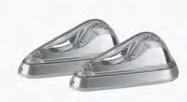

























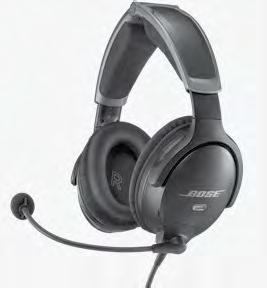










Aircraft certification and maintenance aspects of MOSAIC are nearly a year from becoming effective, as new rules must be written to accommodate MOSAIC. As of the moment this editorial is being written, nothing has changed, but by the time you are reading this, MOSAIC may be alive and well. Many may be asking, what happens now, “Do I need to do anything differently?” or “Should I start flying as a Sport Pilot?” or perhaps, “Should I stop my Private Pilot training and switch over to Sport Pilot?” New entrants to flying may be wondering, “I have always wanted to learn how to fly, is Sport Pilot the way to go?” With the only aircraft limitation being a clean stall speed of not greater than 59 knots (no weight limit) and retractable landing gear and controllable pitch props now in the game, thousands of aircraft now meet the new definition of a Light Sport Aircraft (LSA), removing the main “hitch in the get-a-long” for flying as a Sport Pilot. The only remaining offending part of the new rule is limiting a person flying as a Sport Pilot to carrying only one passenger, even if operating a four- (or more) place airplane. Is the Sport Pilot 2.0 (thanks to EAA for this term) possibly the new entry-level pilot certificate, replacing Private Pilot?
As an active CFI and ground instructor (teaching nationwide through the wonders of ZOOM), I hear these questions in all the classes I now teach and from those taking flying lessons. For this writer, Sport Pilot 2.0 is not just an idea to be pondered, but a daily part of my life. When talking with
a current pilot or prospective student, this writer employs an old acronym used by all sales professionals who are trying to sell a product. As any good salesperson knows, the way to make a sale is to make sure your product or service meets the personal needs of the buyer. This is called the “WIIFM” (pronounced wiffem … What’s In It For Me) principle. The salesperson needs to listen carefully and make the offering, so the product meets the prospective buyer’s “WIIFM.” In counseling the many individuals now approaching this writer for advice on initial training, advanced ratings, medical certificates, aircraft purchases, and many other aviation-related subjects, one comes to realize that no single answer fits all, but opinions and advice must address the “WIIFM” of each individual. Let’s follow that guideline for the remainder of this editorial, repeating the most commonly held concerns being expressed in this writer’s real world of the airport and classrooms.
I am currently a Private Pilot and own a Cessna 172, used for personal trips with my wife and two kids. Does Sport Pilot 2.0 offer me any benefits?
The short answer is “no.” Given that you frequently fly with more than one passenger, Sport Pilot 2.0 has nothing to offer. If your thoughts were about the advantage of getting out of the abusive FAA AeroMed system, take a look at BasicMed, which proactively promotes good health without interfacing with FAA medical bureaucrats.
I am currently flying as a private pilot but hold an ATP. I rent planes like Cessna 172s, 182s, and an occasional Cirrus SR 20. I typically fly with just my wife or a friend. Will flying as a Sport Pilot affect my ATP should I wish to get back into commercial flying?
Sport Pilot 2.0 might just be an option. This writer follows the advice of a longtime friend and AME who advised “never hold a medical certificate higher than needed for the flying you are doing. It just makes you a bigger target.” If flying primarily for recreation, Sport Pilot 2.0 might just work. Be sure to check the clean stall speed listed for the
By Annamarie Buonocore
Bose offers some of the most popular headsets for pilots on the market today. This month, In Flight USA had the pleasure of interviewing Chris Wuerfl of Bose to talk about some of the updates in the company. With flying season at its peak, now is a great time to consider a new headset. Here is some information you need to know to keep your communications at their best.
In Flight USA: We have a few new questions for you because it has been a while since we have talked. To get started, do you have anything new going on at Bose that you would like to share with our readers?
Chris Wuerfl: So, for aviation specifically, it is not that we have launched a new product in the last couple of months or the last time we spoke, but we do have the fairly new ProFlight, which came out about four years ago. We also have the A30, which has fortunately been very well accepted into the
market, and we are growing the market share. The A30 has been out for about two years now, and we are still just getting over the transition from the A20 to the A30. Fortunately, it has been going well. We are, as you know all too well, thinking of the flying season now. We finished Sun ‘n Fun in April, and we were at Oshkosh. We were recently at AERO Friedrichshafen. The buzz, so to speak, was all good, and the people were excited. We provided demos, and they had questions and perhaps wanted to upgrade from the A20 to the A30. There were questions about ProFlight and A30, and it was all very positive.
IFUSA: That is great, and it sounds like it is going very well. So you went to Sun ‘n Fun and AERO. Those are big shows. Tell me about your experiences there?
CW: They were good. Those are busy shows, and it was interesting because for the first time since I have been with the aviation group, which is
coming up on nine years, we moved to another booth location at Sun ‘n Fun. The nice thing about it is that people seek us out; it is not like they sort of trip over us. They go out of their way to find us, whether it is to purchase, get a demo, or ask some questions. But yes, they were positive shows, and Sun ’n Fun was one of the more highly attended shows in a while. We had a lot of really good quality conversations with people.
IFUSA: Are there any other shows or events such as local airport days that you are going to attend this year?
CW: So, we do a couple of things: one of my coworkers, John Mackie, manages some of our larger resellers, and they will have demo day or something along those lines. These resellers have other products, not just Bose, but he will represent Bose on some days. Those are scattered throughout the year. I attend a couple of events as well. These are more commercial and cor-
porate-related events. We also attend NGPA and RTAG. Again, these are all events with a perfect audience for us because there are pilots who are looking to get into their next job or commercial airline space, and when they do, they are often looking for a new headset, and they want to upgrade their A20 to the A30, or they are simply getting a new headset for the first time. Some are flying a quieter jet, so our ProFlight is ideal for them.
IFUSA: Do you have any advice for pilots and users of your headsets?
CW: First and foremost, it is important that you choose the right headset. You are going to be wearing this for a significant period of time, whether it is a couple of hours or on an international flight, which could be 12 or more hours. You could take it off from time to time, but you are going to be wearing it for a significant period of time. Wheth-
Continued on Page 42
Stay tuned for our 2026 dates.
Open Cock pit is when the museum’s visitors can view our famous aircraf t including A-3 Sk y warrior, A-4 Sk yhawk , A-6 Intruder, A-7 Corsair, Harrier jump -Jet T-39 Saberliner, Mustang P-51 ¾ scale, Cessna 0-2 and a M ig-15.
Open Cock pit is when the museum’s visitors can view our famous aircraf t including A-3 Sk y warrior, A-4 Sk yhawk , A-6 Intruder, A-7 Corsair, Harrier jump -Jet T-39 Saberliner, Mustang P-51 ¾ scale, Cessna 0-2 and a M ig-15.
Mar ch 6, 2022 • Noon to 4 p.m.
Open Cock pit is when the museum’s visitors can view our famous aircraf t including A-3 Sk y warrior, A-4 Sk yhawk , A-6 Intruder, A-7 Corsair, Harrier jump -Jet T-39 Saberliner, Mustang P-51 ¾ scale, Cessna 0-2 and a M ig-15.
Shor t Solent Flying Boat walk through tour for an additional fee.
Open Cockpit is when the museum’s visitors can view our famous aircraft including A-3 Skywarrior, A-4 Skyhawk, A-6 Intruder, A-7 Corsair, Harrier jump-Jet, Hiller UH-12 E Helicopter,T-39 Saberliner, Mustang P-51 3⁄4 scale, Cessna 0-2, and Mig-15.
Open Cock pit is when the museum’s visitors can view our famous aircraf t including A-3 Sk y warrior, A-4 Sk yhawk , A-6 I ntruder, A-7 Corsair, Harrier jump -Jet T-39 Saberliner, Mustang P-51 ¾ scale, Cessna 0-2 and a M ig-15.
Shor t Solent Flying Boat walk through tour for an additional fee.
Shor t Solent Flying Boat walk through tour for an additional fee.
Short Solent Flying Boat walk-through tour for an additional fee.
Ac tivities during Open Cockpit include:
Open Cock pit is when the museum’s visitors can view our famous aircraf t including A-3 Sk y warrior, A-4 Sk yhawk , A-6 Intruder, A-7 Corsair, Harrier jump -Jet T-39 Saberliner, Mustang P-51 ¾ scale, Cessna 0-2 and a M ig-15.
Open Cock pit is when the museum’s visitors can view our famous aircraf t including A-3 Sk y warrior, A-4 Sk yhawk , A-6 Intruder, A-7 Corsair, Harrier jump -Jet T-39 Saberliner, Mustang P-51 ¾ scale, Cessna 0-2 and a M ig-15.
Ac tivities during Open Cockpit include:
Open Cock pit is when the museum’s visitors can view our famous aircraf t including A-3 Sk y warrior, A-4 Sk yhawk , A-6 Intruder, A-7 Corsair, Harrier jump -Jet T-39 Saberliner, Mustang P-51 ¾ scale, Cessna 0-2 and a M ig-15.
Shor t Solent Flying Boat walk through tour for an additional fee.
Ac tivities during Open Cockpit include:
Shor t Solent Flying Boat walk through tour for an additional fee.
Open Cock pit is when the museum’s visitors can view our famous aircraf t including A-3 Sk y warrior, A-4 Sk yhawk , A-6 I ntruder, A-7 Corsair, Harrier jump -Jet T-39 Saberliner, Mustang P-51 ¾ scale, Cessna 0-2 and a M ig-15.
Shor t Solent Flying Boat walk through tour for an additional fee.
• Color Guard.
Activities during Open Cockpit Day include:
Ac tivities during Open Cock pit include:
• Color Guard
• Color Guard.
Shor t Solent Flying Boat walk through tour for an additional fee.
• Color Guard.
Ac tivities during Open Cockpit include:
Ac tivities during Open Cockpit include:
• Alfredo’s Catering will be offering refreshments for purchase.
Shor t Solent Flying Boat walk through tour for an additional fee.
Ac tivities during Open Cockpit include:
• Color Guard.
• Live music by The Friends of Ken Band.
• Live music by The Friends of Ken Band
• Color Guard.
• Live music by The Friends of Ken Band.
Ac tivities during Open Cock pit include:
• Live music by The Friends of Ken Band.
• Color Guard.
• European Train Enthusiasts exhibit.
• Oakland Airport Fire Department Display.
• Color Guard.
• European Train Enthusiasts exhibit.
• European Train Enthusiasts exhibit.
• Southern Alameda Count y R adio Controllers RC aircraf t display.
• Live music by The Friends of Ken Band.
• European Train Enthusiasts Exhibit
• Southern Alameda County R adio Controllers RC aircraf t display.
• Color Guard.
• Live music by The Friends of Ken Band.
• Southern Alameda Count y R adio Controllers RC aircraf t display.
• ORCA Ham R adio exhibit and demonstration.
• European Train Enthusiasts exhibit.
• Live music by The Friends of Ken Band.
• Southern Alameda County Radio Controllers Model Aircraft Exhibit
• ORCA Ham R adio exhibit and demonstration.
• Live music by The Friends of Ken Band.
• European Train Enthusiasts exhibit.
• Ham Radio Demonstration
• ORCA Ham R adio exhibit and demonstration.
• Simulators available for an additional fee
• Simulators available for an additional fee
• European Train Enthusiasts exhibit.
• Southern Alameda Count y R adio Controllers RC aircraf t display.
• Live music by The Friends of Ken Band.
• Simulators available for an additional fee
• Southern Alameda Count y R adio Controllers RC aircraf t display.
• European Train Enthusiasts exhibit.
• Simulators available for an additional fee
• Southern Alameda Count y R adio Controllers RC aircraf t display.
• ORCA Ham R adio exhibit and demonstration.
• ORCA Ham R adio exhibit and demonstration.
Open Cockpit day is a GROUPON Blackout day
• Southern Alameda County R adio Controllers RC aircraf t display.
• ORCA Ham R adio exhibit and demonstration.
• European Train Enthusiasts exhibit.
Open Cockpit day is a GROUPON Blackout day
• Simulators available for an additional fee
• ORCA Ham R adio exhibit and demonstration.
Open Cockpit day is a GROUPON Blackout day
• Simulators available for an additional fee
• Simulators available for an additional fee
• Southern Alameda Count y R adio Controllers RC aircraf t display.
• ORCA Ham R adio exhibit and demonstration.
• Simulators available for an additional fee Open Cockpit day
Open Cockpit day is a GROUPON Blackout
Open Cockpit day is a GROUPON Blackout day


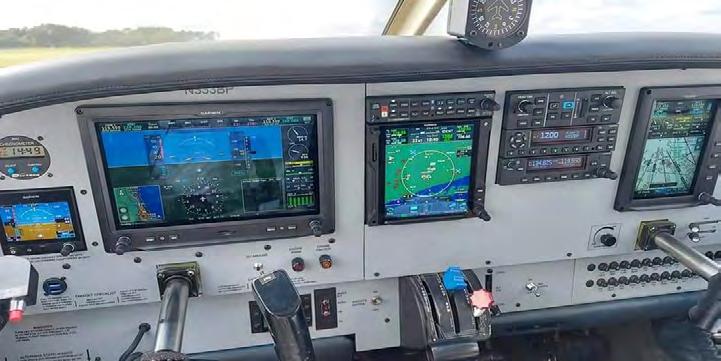
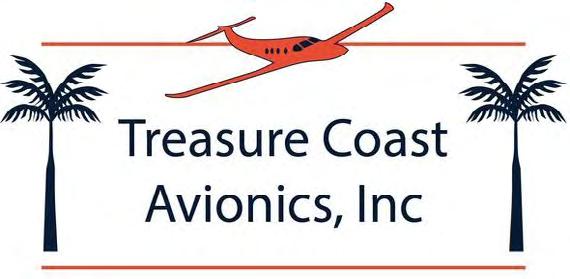
Coast Avionics, Inc. is the original FAA Certified Repair Station for Avionics at Treasure Coast International Airport (KFPR) in Fort Pierce, Florida. We have been serving pilots and aircraft owners in the Southeastern United States since 1990. Treasure Coast International Airport (KFPR), 3800 Saint Lucie Blvd., Fort Pierce, FL 34946 Phone: 772-464-3148 • Fax: 772-464-3197 • Se Habla Español tcavionics@gmail.com • www.treasurecoastavionics.com
By Darren Pleasance, AOPA President and CEO
Even though I’ve been a member of AOPA for more than 30 years, it was not until I embarked on this mission as your president that I truly realized how much AOPA has to offer its members. In fact, in my early days as your president, I spent many of them saying “We have that?” And by that I mean the products, services, resources, expert advice, and more that are a part of your membership dues. It has blown my mind.
The first resource that I cannot emphasize enough is AOPA’s Pilot Protection Services. PPS is like having your own personal attorney and medical certification advisor at your beck and call for any aviation issue to come your way. Like it or not, each of us may face a situation that could put us on the wrong side of the FAA, whether we did something we meant to or not. I asked AOPA legal counsel Jared Allen and his team of attorneys what the most common violations are that members call for help. He polled his team and told me that a TFR/restricted airspace bust is the most common violation; followed by inadvertent entry into Class B, C, D airspace; and then intentional airport entry but with failure to establish communications. All easy “whoops” that we can imagine and fear happening to us. When that call from the FAA comes, do you know that AOPA can often mitigate the possible consequences simply by being in your court? In addition to the AOPA staff attorneys who are only a phone call/email away, we also have a nationwide network of panel attorneys who can help you in whatever state you are in — emotionally or physically. And, we have a team of medical specialists who will provide confidential advice. We can help maximize the chance you’ll get to keep your medical and keep on flying legally. Don’t face the angst that comes with a call from the FAA when your membership puts highly regarded and expert counsel on your side.
EAA AirVenture is behind us, but I am still amazed at the breadth of ques-
tions posed to me there. On the flightline or in our AOPA tent, I was asked repeatedly about getting help. Help with aviation career opportunities, help with medical issues, help with maintenance questions, help with aircraft purchases/sales, help with certificate issues and more. Again, I turned to AOPA’s staff and asked how we can help, and I was inspired by the insight our team delivered. The AOPA Pilot Information Center is staffed by aviation professionals who — with most of them being very longterm employees — can answer and have answered the myriad issues that pilots face. There’s Carlo Cilliers, the award-winning aircraft builder whom many have called the “airplane whisperer.” He can and has answered virtually every maintenance question on Earth. I challenge you to stump him. Then there’s Rodney Martz, our 30-plus-year expert on hangar issues, aircraft purchases, and so much more. Ask 25-year-plus senior technician Craig Brown about certificate issues. Ask 30-year-plus medical certification director Gary Crump about your medical problems or how to take advantage of BasicMed. These are just a few of the experts who happily and immediately answer member questions every day, to the tune of nearly 50,000 a year! And if they can’t find your answer right away, trust me, they will work the problem to its conclusion.
If I’m sounding a little giddy about AOPA’s offerings, please believe me when I say I had no idea. And worse than that, I fear you, our members, don’t realize how much AOPA can do for you either. As the premier advocate for general aviation pilots in this country, we are here to help. The depth of the AOPA staff’s understanding of aviation issues, problems, and solutions is, truly, mind-blowing. What we can and will do for our members sets us apart and aligns with the other very effective associations in this country advocating and protecting their interests for their members.
Over my many years of flying, there
Continued on Page 16
Continued from Page 9
about numbers at the end of the day, and many of these regional carriers were not keeping up, so they closed and ended up leaving the community.
The airline industry is experiencing many changes. We’re going to see fewer of these kinds of airlines. The airline industry is changing something fierce right now. It’s going to consolidate even more. This makes sense. I used to be in airport management, and it just makes more sense for some of these smaller carriers to merge with larger airlines. They are limited with how many passengers they can carry, etc. So this trend makes a lot of sense from an airport management perspective. They’re owned by the the major airlines. There are very few standalone regional carriers, and even they have contracts with the major airlines.
So, with that having been said, we are not facing a major pilot shortage, at least not in the next five to 10 years. There will always be a need for pilots. FSANA has worked very hard to bring career pilot training financing to the independent flight school industry. Two years ago, we created the International Aerospace Commission (IACC.aero). This will help career pilots, not recreational pilots, get federal financial aid or borrow under the Title IV program for their flight training. This will be an important milestone in the civil aviation flight training industry in the United States.
IFUSA: What are your thoughts on the DPE (examiner) shortage and how are you addressing that with your members?
BR: FSANA began to work in the airmen practical test category in collaboration with the FAA more than five years ago. We believe that every person who needs a practical test should be able to secure that test in a timely manner (within 14 days of when they’re ready to take the test). For a variety of reasons, people can wait anywhere from two or three week or as many as 10 to 12 weeks, depending on what part of the country they’re in. The short answer is yes. There is a DPE capacity issue. We advocated and were successful in

FEBRUARY 25-27 2026
having Congress write into the new reauthorization from last year that the FAA create a central testing office. There is an unacceptable time lag at this time. It was getting better, but Covid set it back again. We’re hoping within the next 12-24 months, we’ll see increased improvements in the FAA central testing office. They have set this office up. One of the problems is that DPEs set their own schedules once they appointed by the FAA. There is no minimum number of tests a DPE must conduct on an annual basis. The process of selecting examiners needs improvement. If they select airline pilots, those folks are busy with their day jobs. But we do expect this to turn around soon.
IFUSA: What are your thoughts on MOSAIC?
BR: It is always good when the FAA loosens restrictions on pilots and leaves safety discretion to the industry, so MOSAIC is a win. It should bring more people into aviation. It is kind of like when they created the light sport category. It helped a lot, but it didn’t solve everything. That was touted as being the next best thing since sliced bread. This is an expansion of that and has come to include much heavier aircraft. It’s good, but it’s not going to double or triple the pilot population. We’re starting to write about this and educate our members, as it will open many doors for them.
IFUSA: That concludes my questions. Thank you for your time. For more information, readers can visit www.fsana.com.














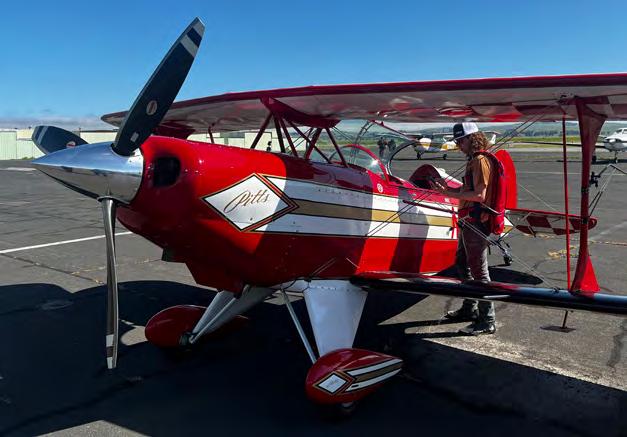

On Sept. 4, 2025, ASTM International published the final voting results approving Swift Fuels’ 100R unleaded avgas for an ASTM International Production Specification. This is the culmination of several years of dedicated research by the team from Swift Fuels working in collaboration with FAA and numerous OEMs from Lycoming, Continental Aerospace, Rotax, Textron Aviation, Piper, and others, plus testing
laboratories and various aviation part suppliers.
Members of the ASTM voting committees represent several hundred companies from around the world including major international oil companies plus fuel experts and representatives from military and civilian entities. This is the third time in 11 years that Swift Fuels has successfully navigated the ASTM process to be awarded an ASTM Pro-
duction Specification for unleaded aviation gasoline.
Swift Fuels will continue the transition to unleaded avgas by rolling-out new sites to utilize their 100R Unleaded Avgas. As of today, five U.S. flight schools utilize 100R as well as five flight schools in the EU (Germany, Belgium, Austria and The Netherlands). The company expects to rapidly expand the coverage of 100R at many more
sites across the globe in the weeks and months ahead.
More information on the transition to unleaded avgas will be forthcoming, according to company officials. To contact Swift Fuels, based in West Lafayette, Ind., for aviation gasoline, go to www.swiftfuelsavgas.com or call 1-(765) 464-8336
Congressmen Steve Cohen (TN-9), the former Ranking Member of the Aviation Subcommittee, and Andre Carson (IN-7), a Member of the Aviation Subcommittee, on Sept. 18 introduced the Aviation Funding Stability Act, a measure that would allow the Federal Aviation Administration (FAA) to keep all of its programs running and all of its employees working by drawing from its Airports and Airways Trust Fund during any lapse in typical government appropriations. The current temporary budget agreement ended Sept. 30.
Under the current proposal, the FAA’s authorization to draw from the Airport and Airway Trust Fund during a shutdown will be permitted only for up to 30 days if no appropriations bill is enacted, rather than for an indefinite period. The Airport and Airway Trust Fund, which funds the U.S. national air transportation system, typically generates enough revenue from the domestic passenger ticket tax, commercial fuel tax, general aviation gasoline tax, and cargo tax to sustain FAA programs during a lapse.
Congressman Cohen made the following statement: “The Aviation Funding Stability Act is intended to prevent disruptions in aviation safety
operations, air traffic control staffing, and certification processes that are vital to the U.S. economy and our national security. At a time when air travel is already strained by staffing shortages, outdated infrastructure, and record flight delays, the last thing we need is another crisis that puts safety and efficiency at risk.
“The aviation system is too critical to be caught up in Washington’s budget battles. This bill would allow the FAA to tap into the Airport and Airway Trust Fund to keep essential operations running, so planes stay in the air, safety inspections continue, and modernization projects don’t grind to a halt. At a time with continued government uncertainty, this measure is a no brainer and just makes sense.”
Congressman Carson made the following statement: “America’s aviation system is the safest and most efficient in the world. It contributes trillions of dollars to our national economy and supports millions of American jobs. A government shutdown should not interrupt aviation or create unnecessary chaos. This bill ensures that the FAA can keep operating without disruptions, which is critical to protect public safety and the livelihoods of aviation workers
who keep our country and economy moving.”
The measure is supported by several organizations such as: Air Line Pilots Association (ALPA), Airlines For America (A4A), Airports Council International-North America (ACI-NA), American Association of Airport Executives (AAAE), Association of Flight Attendants-CWA (AFA), Association of Professional Flight Attendants (APFA), National Air Traffic Controllers Association (NATCA), National Air Transportation Association (NATA), National Federation of Federal Employees (NFFE-IAM), Professional Aviation Safety Specialists, AFL-CIO (PASS), Southwest Airlines Pilots Association (SWAPA), and the Regional Airline Association.
An identical measure was introduced in the 117th Congress by retired Oregon Congressman Peter DeFazio and then-Aviation Subcommittee Chair Rick Larsen in June of 2021.
Endorsing organizations statements:
“We cannot allow politics to disrupt aviation safety and security,” said Sara Nelson, president of the Association of Flight Attendants-CWA, representing 55,000 Flight Attendants at 20 airlines. “During the 2019 shutdown, our system
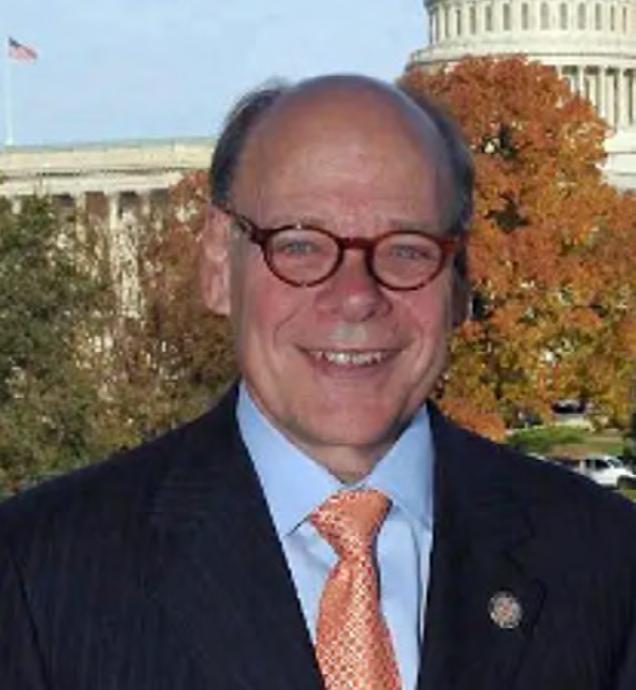


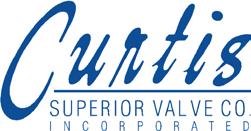
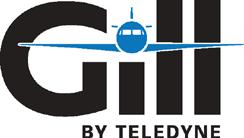


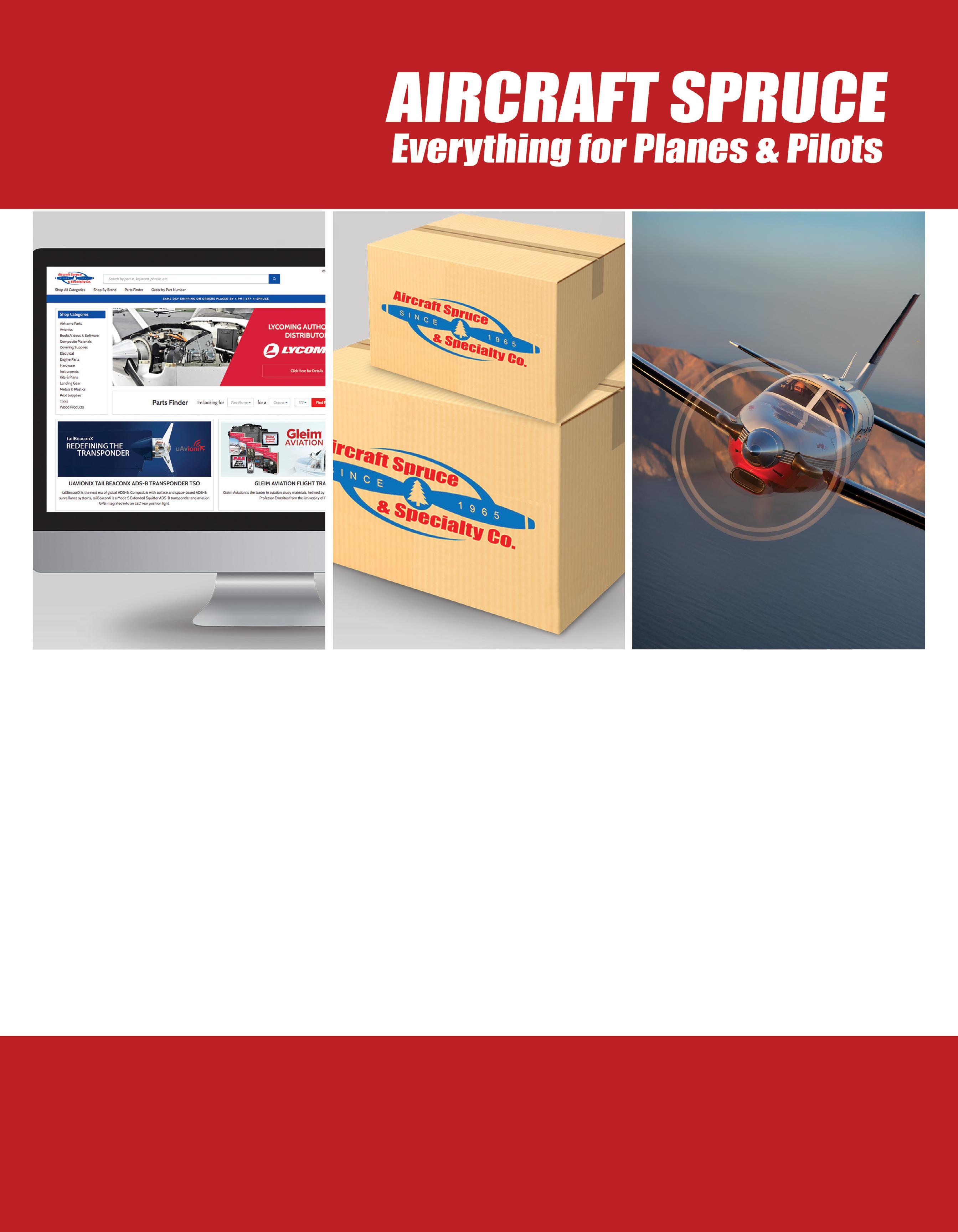
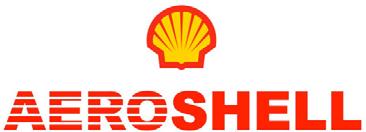

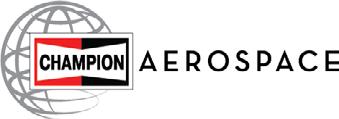









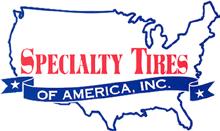




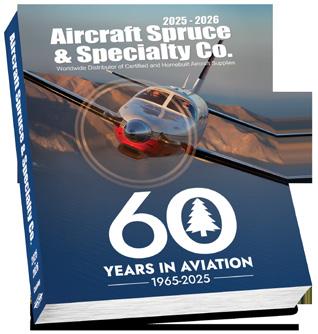




When corrosion grounded a vital part of the Bonanza and Debonair fleet, there was no fix, no supplier, and no clear path forward. But with a bold financial prize and a belief in innovation, the American Bonanza Society (ABS) sparked a solution that saved thousands of aircraft – and restored confidence across the aviation community.
Tom Turner is the Executive Director of the American Bonanza Society and ABS Safety Foundation. He has been with the organization for more than 22 years. In Flight USA was fortunate to sit down with him shortly after AirVenture to learn about the half-million dollar Maciel Rudevator Prize.
ABS focuses on providing technical and educational support to more than 10,000 Bonanza owners worldwide.
“Our mission is to keep these aircraft flying safely and to protect lives through education and innovation,” said Turner.
“We started with a $100,000 prize to solve the magnesium ruddervator skin
Continued from Page 12
have been times when I could have used AOPA’s thoughtful, and easily accessible advice had I realized it was included in my membership. Whether that was when I was in my early 20s trying to navigate a color vision deficiency that kept me from becoming an airline pilot, or when I accidentally clipped the edge of a TFR many years ago, or when I was looking to purchase my first airplane (a Pitts S–1S), or when I had a trip to Canada and needed to understand cross-border procedures, or more recently when I was trying to guide my son on whether to get a third class medical or BasicMed for his own aviation journey. AOPA could have helped me to
issue. Even minor damage rendered the aircraft unflyable. There was no fix — until the prize made one possible. Initially, many showed interest, but no one followed through. The cost of development outweighed the reward,” Turner explained.
So, “we raised the prize to $500,000.” The ABS Safety Foundation used part of a $1 million fund from 2008. Plus, 73 members contributed additional funds. The final prize totaled $528,110. As a result, “the prize helped restore faith in the fleet.”
Seven firms engaged, and one – SRS Aviation – succeeded. They produced 100 certified kits and won the prize in May. “We verified everything through a site visit and announced the winner at Oshkosh,” said Turner.
According to David Laurin, president and owner of SRS Aviation based in Burnsville, Minnesota, “The first die we tried cost us $49,000 and we scrapped it. Working with magnesium isn’t easy. When we heard of a V-tailed Bonanza getting parted out because there were no ruddervators available,
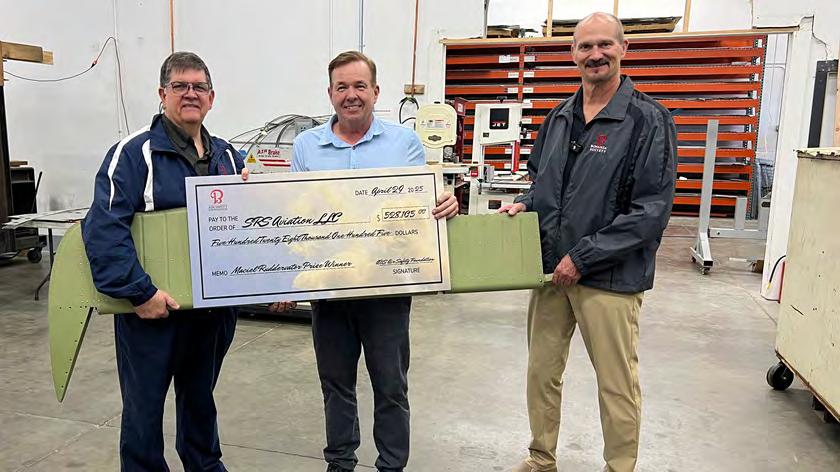
we knew we had to get in the game.” Turner continued, “At our annual dinner with 350 members, we kept the winner a secret until the announcement. We showed a professionally edited video and followed up with a press conference and media release.”
The ABS Safety Foundation is a non-profit, funded by donations, sponsorships, and an annual campaign. Their monthly 72-page magazine also generates revenue through advertising. Learn more at the American Bonanza Society, www.bonanza.org.
quickly and accurately navigate each of these issues had I only realized that my AOPA membership already included access to experts in each of these areas. Your AOPA membership dues can be the best investment you make to ensure your aviation journey remains as vibrant, inspiring, and rewarding as all your life’s dreams should be. We are in your court. We are here to serve. You are a key member of the AOPA family. Call us.
Reach out to Darren by email at darren@aopa.org
AOPA President and CEO Darren Pleasance is a CFI and has flown more than 8,000 hours in more than 80 different aircraft.



Compelling content -


Professional Branding & Graphics
Powerful Web Sites & SEO
Social Media Management
Engaging Podcasts
Profitable Webinars
On-Site or Virtual Services
Studio Time Available in SLC
Sales Process Consulting & Tools articles, videos, and posts.
The House of Representatives passed the Mental Health in Aviation Act of 2025, which would give pilots more options to seek care and reduce the stigma around mental health treatment.
The bipartisan bill, H.R.2591, was introduced by Reps. Sean Casten (D-Ill.)
and Pete Stauber (R-Minn.) and passed by a voice vote on Sept. 8. It directs the FAA to modernize its medical certification process to better support pilots and air traffic controllers who seek treatment. Specifically, it would:
• Require the FAA to revise regula-
� Available in both Qref® Book, Card and new iPad editions
� Over 50 years of professional experience in every checklist
� Written by Master CFIs with workflow and ease of use in mind
� Professional design, rugged construction
Beechcraft Bonanza A36 285HP1968-1983
Beechcraft Bonanza C/D 35 1951-1953
Beechcraft Bonanza J/K/M 35 1958-1960
Beechcraft Bonanza N/P 35 1961-1963
Beechcraft Bonanza V35 A/B 1966-1982
Cessna 150 1959-1977
Cessna 152 1978-1986
Cessna 172 Universal Universal
Cessna 172M 1973-1976
Cessna 172N 1977-1980
Cessna 172P 1981-1986
Cessna 172R 1998-2006
Cessna 172RG 1980-1985
Cessna 172S 1998-2006
Cessna 172S G1000 2005+
Cessna 177RG 1971-1978
Cessna 182P 1972-1976
Cessna 182R 1981-1986
Cessna R182 Skylane RG 1978-1986
Cessna 182RG Turbo 1979-1986
Cessna 182T Analog Gauges 2001+
Cessna 182T/G1000 2004+
Cessna 210N Centurion 1979-1984
Cessna Turbo 182T 2001+
Cessna Turbo 182T/G1000 2006+
Cessna Turbo 206H 1998+
Cessna Turbo 210M Centurion1977-1978
Cirrus SR20 Analog Gauges 2000-2003
Cirrus SR20 G1-G2 2003-2007
Cirrus SR20 G3 2007+
Cirrus SR20 Perspective 2008+
Cirrus SR22 G1-G2 2003-2007
Cirrus SR22 G3 2007+
Cirrus SR22 Perspective 2008+
Cirrus SR22 G3 Turbo 2007+
Cirrus SR22 Turbo Perspective 2008+
Diamond DA20 C1 1998+
Diamond Star DA40 2001+
Piper Archer II PA-28-181 1976-1994
Piper Archer III PA-28-181 1995-2002
Piper Arrow 180 PA-28R-180 1967-1971
Piper Arrow II PA-28R-200 1969-1976
Piper Arrow III PA-28R-201 1977+
Piper Arrow III Turbo PA-28R-201T1977-1978
tions over the next two years to encourage voluntary disclosure of mental health conditions and treatment.
• Require annual reviews of the special issuance process to expand treatment options and approved medications.
• Provide nearly $14 million annually through 2028 to recruit and train more aviation medical examiners, including psychiatrists, to help reduce the current backlog of special issuance applications.
• Provide $1.5 million annually through 2028 to launch a public information campaign to reduce stigma, raise awareness of available services, and build trust with pilots and air traffic controllers.


















Piper Arrow IV PA-28RT-201 1979-1982
Piper Arrow IV Turbo PA-28RT-201T1979-1990
Piper Cherokee 140 PA-28-1401964-1977
Piper Cherokee 150 PA-28-1501961-1967
Piper Cherokee 160 PA-28-1601961-1967
Piper Cherokee 180 PA-28-1801963-1973
Piper Dakota PA-28-236 1979-1994
Piper Cherokee Lance PA-32R-3001976-1978
Piper Navajo PA-31-310 B/C 1972-1980
Piper Navajo Chieftain PA-31-3501973-1984
Piper Saratoga SP PA-32R-3011980-1992
Piper Saratoga SP Turbo PA-32R-301T1980-1987
Piper Tomahawk PA-38-112 1978-1982
Piper Warrior 151 PA-28-151 1973-1977
Piper Warrior II PA-28-161 1976-1986
MANY MORE MODELS COMING SOON!

• Implement recommendations from the 2024 Mental Health and Aviation Medical Clearances Rulemaking Committee.
AOPA served on the rulemaking committee, which addressed the culture within the aviation industry, the stigma and lack of knowledge surrounding mental health treatment, mistrust in the aeromedical process, and the often-complicated process of obtaining a medical certificate.
“I commend Representatives Casten and Stauber for their leadership on this issue. For too long, pilots have lived with the fear of seeking treatment for a mental health concern,” said AOPA President Darren Pleasance. “This bill takes meaningful steps to ensure pilots can prioritize their health and keep flying.” The bill now heads to the Senate for consideration.





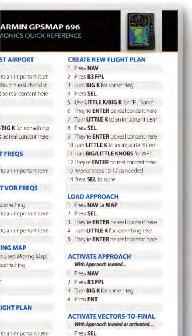



Avidyne Entegra
Garmin G1000 Non-WAAS
Garmin G1000
Garmin G1000 WAAS
Garmin G600/G500
Cirrus Perspective by Garmin
Bendix/King KLN 89
Bendix/King KLN 90B
Bendix/King KLN 94
Garmin GMX 200
Garmin GPS 400
Garmin GNS 430




Garmin GNS 480
Garmin GNS 530
Garmin GTN 750/650
Garmin GX Series
Garmin MX 20
Garmin 300XL/250XL
AnywhereMap ATC
AvMap EKP IV / IV Pro
AvMap EKP V (coming soon)
AvMap Geopilot II / II Plus
Bendix/King AV8OR
Bendix/King AV8OR Ace




U.S. Transportation Secretary Sean P. Duffy on Sept. 12 announced a new pilot program within the Federal Aviation Administration (FAA) to accelerate the deployment of advanced air mobility (AAM) vehicles. These new technologies have the potential to transform aviation, including expanding connectivity to rural American communities, reducing road congestion in urban areas, and enhancing emergency services or medical transport. The action follows President Trump’s executive order to unleash American drone dominance.
The pilot program, known as the Electric Vertical Takeoff and Landing Integration Pilot Program (eIPP), will form public-private partnerships with State and local government entities and private sector companies to develop
new frameworks and regulations for enabling safe operations.
“The next great technological revolution in aviation is here. The United States will lead the way, and doing so will cement America’s status as a global leader in transportation innovation,” said Duffy. “That means more high-paying manufacturing jobs and economic opportunity. By safely testing the deployment of these futuristic air taxis and other AAM vehicles, we can fundamentally improve how the traveling public and products move.”
“This pilot program gives us another opportunity to advance the Administration’s plan to accelerate safe eVTOL and advanced air mobility operations across the United States,” said FAA Administrator Bryan Bedford. “We
will take the lessons learned from these projects to enable safe, scalable AAM operations nationwide.”
The eIPP will include at least five pilot projects. It will run for three years after the first project becomes operational. Envisioned eIPP operations include piloted and unmanned approaches to:
• Short-range air taxis
• Longer-range, fixed-wing flights
• Cargo
• Logistics and supply-serving emergency management, medical transport or off-shore energy facilities
• Increasing automation safety
Additional Information:
As part of the eIPP, the FAA is seeking participants for a public-private
partnership program to demonstrate the viability of new AAM technologies including electric vertical takeoff and landing (eVTOL) aircraft in ways that deliver new benefits to the American public. Applicants must be a State, local, tribal or territorial government with a U.S.-based private sector partner or partners.
Participants will use piloted, optionally piloted, or unmanned AAM aircraft that will generally be over 1,320 lbs. and may be capable of carrying passengers. Participants will also include technologies enabling safe integration of these aircraft into the national airspace system. Learn more at https://sam.gov/ workspace/contract/opp/97727114ea0b4c9a9ba3553a1acf1d0b/view. General information is available at faa.gov.
Walked the Talk!)
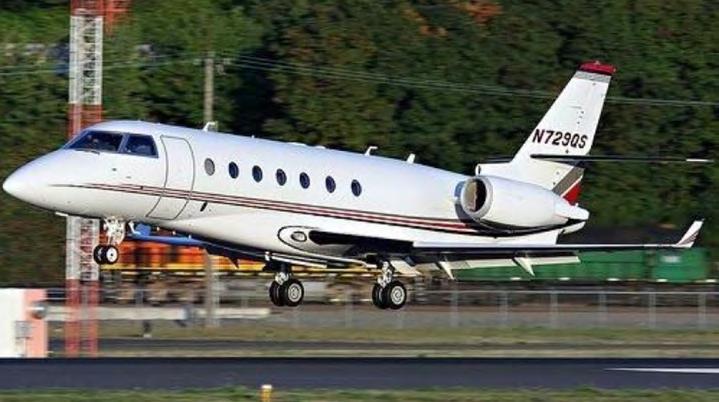
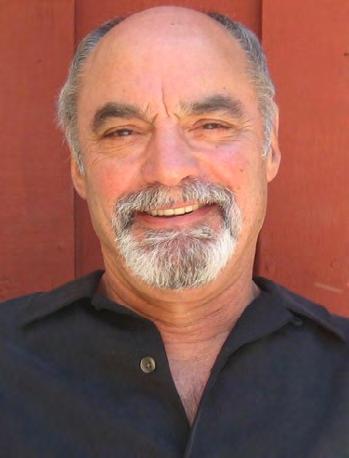
My Services ~
Ghostwrite your Book or Articles • Engage your customers with • Gifts of short, attentiongrabbing Ebooks
(415) 320-9811 • botajet@gmail.com
Website & Blog: www.bertbotta.com https://www.facebook.com/BertBotta1 https://www.linkedin.com/in/bertbotta/ NetJets Pilots & F/A Facebook page: https://www.facebook.com/groups/447755025256768

Continued from Page 14
was stretched to the breaking point, and further strained by the pandemic. A shutdown today could have catastrophic consequences for our entire economy and most importantly, for our safety and security. We urge Congress to pass the Aviation Funding Stability Act to ensure that our nation’s aviation workers are able to continue our vital work without disruption.”
“Now is not the time to put critical FAA functions and programs at risk because of a political stalemate in Washington,” said ACI-NA President and CEO Kevin M. Burke. “The last government shutdown lasted longer than anyone expected and took a tremendous toll on our aviation system. Dedicated air traffic controllers, security officers, and other federal personnel stayed on the job without getting a paycheck. Flight delays and cancellations rippled across the system and our economy, and important airport infrastructure projects were stalled. We appreci-
ate Reps. Cohen and Carson for putting forward this important legislation to keep the FAA and its workers open for business in the event of another government shutdown.”
“APFA endorses the Aviation Funding Stability Act to ensure that critical FAA functions are not interrupted if the government is not funded. Shutdowns are costly to any agency that is already stretched thin, and in aviation we don’t take chances. Our industry is built upon mitigating risk, so if planes are to continue flying during a government shutdown, every FAA employee and air traffic controller must remain on the job with pay to continue their safety-critical roles. Thank you, Rep. Steve Cohen (D-TN-9) and Rep. Andre Carson (DIN-7), for reintroducing this bill to ensure that funding interruptions will not impact the safety of the flying public.” – Association of Professional Flight Attendants (APFA) National President Julie Hedrick, representing 29,000 American Airlines Flight Attendants
By Jeffrey Decker
The most-studied 100-octane avgas substitute – by VP Racing Aviation –powered this year’s Unlimited Experimental Class winner of the AirVenture Cup.
“It’s exciting after years of development through the partnership with VP Racing and we have a product we can not only test, but we can put in the air,” said Andy Findlay, piloting a Lancair Legacy through the circuit over eastern and central Wisconsin at an average speed of 296.33mpd. “We even beat the Cirrus Jet by one mph,” Findlay cheered. Testing shows best power and best economy fuel flows are almost 2 percent higher than with standard 100LL.
The specialty fuelmaker’s Chief Operating Officer Karen Madden flew as co-pilot. She can’t say when UL100E will be approved for fleetwide use, but notes the advantages of extensive industry and government testing as the only participant in the FAA’s Piston Aviation Fuels Initiative (PAFI) testing and approval program.
Research and Development Director Mark Walls says tests keep prov-

VP Racing’s victory at AirVenture Cup has been called a major step forward for the future of aviation fuel.
(Photo courtesy Jeffery Decker)
ing the lead-free fuel works safely and powerfully. “We are nearing completion of our eight-year journey to get our unleaded aviation fuel certified by the FAA and the OEMs for fleetwide use,” he said. “We look forward to finishing up and fueling the general aviation community by the end of next year.”
Competitor Swift Fuel is no longer in the transparent and thorough PAFI testing process, but President Chris D’Acosta announced, “We expect our
STC to be issued in the next few days or weeks... The headline is that this is our tenth anniversary.” (See related story on page 14.)
GAMI’s G100UL has had its STC for three years but is sold at only three airports due to resistance over its confidential formula. Lead has boosted avgas octane for more than 80 years while allegedly causing an array of health problems.
Joe Coraggio, Vice-Chairman of the AirVenture Cup Race called VP Racing’s victory “a major step forward for the future of aviation fuel. The AirVenture Cup has always championed the spirit of innovation and how racing technology filters into mainstream aviation. Having VP Racing Aviation not only power the winning aircraft, but also support the race as a sponsor this year, is a perfect reflection of that mission coming to life.”
VP Racing and LyondellBasell joined forces in 2018 to develop an unleaded aviation gasoline. In late 2023, this collaboration’s latest fuel passed a critical 350-hour durability test in a turbocharged Continental TSIO-550-K piston engine, making it the first unleaded fuel to pass this test and qualify
for full-scale testing in the FAA’s rigorous PAFI program. VP and LyondellBasell have also completed Phase I of ASTM D7826 materials compatibility testing.
In short…
EPA issued an endangerment finding for leaded AVGAS in 2023, which would end leaded aviation by 2030.
VP Racing and LyondellBassel joined efforts to produce a safe, cost-effective fuel that can be widely distributed.
UL100E is compatible with 100LL in all proportions, with a synergistic octane response.
Fuel economy is similar to 100LL.
The anticipated price of UL100E will be on par with 100LL.
No additional fees to use this fleetwide certified fuel, unlike STC fuels.
Both PAFI authorization and ASTM specification progress concurrently for UL100E.
PAFI testing will likely be completed in 2025, after which 100LL phaseout will begin.
For more information and updates, go to Flyeagle.org
Learn more about VP Racing fuels at https://vpracingfuels.com.
By Jeffrey Decker
Nothing lasts forever and visitors to Oshkosh were sorry to see a major drop in the federal presence at this year’s AirVenture due to extensive federal cuts.
Most of the agencies that have filled the Federal Pavilion for decades did not appear at all, and the entire NASA structure was just a concrete slab with a Navy recruiting bus and a sandwich shop.
“Those cuts were made before I was appointed,” said Todd Ericson, senior advisor to the NASA administrator. He was appointed in February after four years as director of Space X’ Polaris project, and five years as safety chief and test pilot with Virgin Galactic after 21 years with USAF.
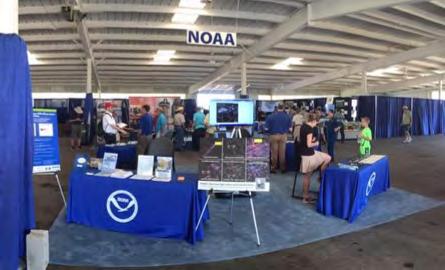
Most of the agencies that have filled the Federal Pavilion at AirVenture for decades did not appear this year due to federal cuts. (Photo courtesy Jeffery Decker)
The NASA logo on his shirt may have been the only one there. No stickers or tattoos could be found, nor could dozens of staff and contractors normally answering questions and hosting seminars.
“Not even NASA?” questioned
John Williams of Wisconsin, retired from the National Parks Service, where he worked in aviation and law enforcement. “You’d think they have some connection to flight. Maybe space doesn’t count.”
Williams volunteers every year to staff the National Parks Service booth at EAA, but did not know until he arrived that no paid staff would be present. More than 1,000 Parks Service employees have been laid off by the Trump administration.
“We’ve had everybody asking why we don’t have greater participation,” he said. “The Parks Service has always had a strong connection with EAA. We do search and rescue, wildlife counts, we assist in medevacs, and of course we have an extensive program for fire
suppression. I think we’re losing a valuable connection with the public.” Public agencies enjoy a discount for booth space but most did not make the trip for the first time in memory. According to the EAA Federal Pavilion webpage, “Due to travel restrictions, Air Force Research Laboratory will not have a booth in the Federal Pavilion in Hangar D in 2025.” The same is said for the National Oceanic and Atmospheric Administration’s, Transportation Safety Institute, U.S. Fish and Wildlife Service, USFWS National Aviation Management Branch, The National Museum of the United States Air Force and the National Nuclear Security Administration.
The National Transportation Safety
Continued from Page 20
Bureau was present and the Bahamas booth seemed to triple in size.
Commercial booths were reshuffled to expand into the federal area, replacing traditional blue-draped walls with black.
Transportation Secretary and acting NASA administrator Sean Duffy did not mention cuts when he announced the new MOSAIC to an Oshkosh crowd at show center. He praised FAA Dep-
uty Administrator Chris Rocheleau’s aggressive work to finalize that rule nine months early. “He’s been a killer!” Duffy exclaimed, adding, “Maybe that’s the wrong word.”
The number one FAA spending priority, Duffy said, costs $12.5 billion: “We’re going to redo telecom, going from copper to fiber.” Some radar units are 70 years old and need replacement, he added.
Air Traffic Controller shortages
should end with improvements to their main training center. “We have more controllers in Oklahoma City than we ever have,” he said, and more instructors, too. “If it takes two years before you can get in you’ll go find another job. So we’ve streamlined that process.”
Goals to modernize the sky are on track, Duffy assured. “If it doesn’t happen I can guarantee you... the president will fire me.”
For FAA, a major $1.45 trillion budget bill introduce in April calls for increased funding for operations by $359 million to $13.8 billion, but discretionary spending levels could drop by $163 billion, or 22 percent.
The Essential Air Service Program supplements commercial travel to remote corners and is targeted for a reduction of $308 million. Within TSA, the proposal calls for reducing funding for Transportation Security Officers by $247 million.
By Jeffrey Decker
A new navigation app sees the future to navigate around weather while showing airspace and structures in three dimensions and transcribing every word with traffic control. It works on Apple, Android and Linux, and in a new 13-ounce gadget called Smart ADS-B.
ClearSky AI offers an artificial intelligence summary, says AvNav Founder Sanjay Kumar, showing the best routes to avoid common weather delays. “This thing runs for ten seconds and gets you the story,” he says, “in plain English with infographics, telling you if it’s a go or no go, with the best alternatives and when to fly.”
According to the FAA, weather caused 75 percent of air traffic delays longer than 15 minutes. Debuting at Oshkosh, AvNav’s enhanced electronic flight bag shows where the stormfronts are and where they’ll be, with three-dimensional renderings of terrain and every building along the way. The app offers “GPU-accelerated performance, wrapped terrain visuals, and raster/ vector hybrid overlays for intuitive in-flight and pre-flight planning,” says Kumar.
Forecasting stretches ten days ahead when logged in, but long-range planning doesn’t work in the sky, where shorter re-routes are available. Other services work fine offline, like ATC transcription. “Air traffic controllers
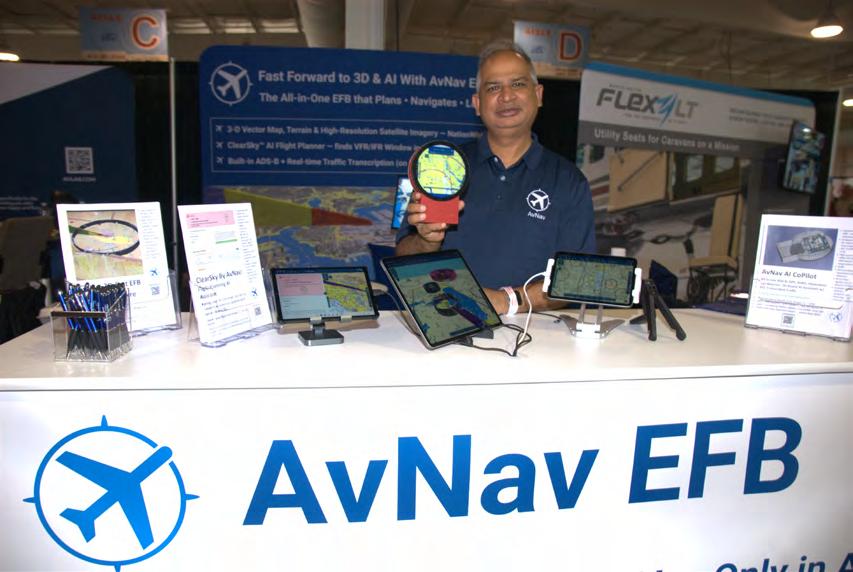
AvNav Founder Sanjay Kumar claims ClearSky AI offers an artificial intelligence summary, showing the best routes to avoid common weather delays. (Photo courtesy AvNav)
talk very quickly, and people like me have a strange accent, so this transcribes everything said on the radio.”
Schyler Rochelle is a Los Angeles programmer helping with AI modeling and promoting the new service at Oshkosh. “As a CFI working in some of the most complex airspace in the country, I love AvNav’s 3D airspace and terrain depictions. It brings flight plans alive to my students,” he says.
Trials of 60 days are available for the $185 annual service, which also bills at $19.95 per month. The Smart ADS-B device integrates GPS, AHRS on a custom Raspberry Pi platform even detects carbon monoxide.
Learn more at https://avnav.com.
By Jeffrey Decker
The first hydrogen/electric hybrid Bonanza may fly within two years to pioneer new clean power, blazing through science and red tape for the future to follow.
California-based Aviate Enterprises is fitting two Bonanza A36-HEs with propulsion from Australian startup Stralis Aircraft, using high-temperature fuels cells unlike more common low-temp models. “Twenty years ago we couldn’t do this”, announced Aviate President Tim Devine. A retired USAF Lt. Colonel, his established business provides the federal government with materials, including aircraft, and covers a range of services like water treatment at Joint Base San Antonio. “We deal with extremely hazardous materials all the time,” he says.
Hydrogen is clean, the universe’s most common element, and releases only water as exhaust. Stralis Aircraft aims to rewrite history for the element known to be particularly flammable. Sales Lead Fletcher McKenzie asserts, “This isn’t the 1930s anymore. It’s 2025. Thousands upon thousands of gallons of liquid hydrogen cross this country every day and we never hear about it because there are no incidents.”
Stralis CEO Bob Criner joined the news conference by phone. “The plan is to complete static testing over the next three months,” he said, and to fly in two years. That takes industry, academic and regulatory fine print. “The issue is there are no certified hydrogen-electric aircraft yet. We need to look at the technology and decide what regulations we need.” Meanwhile, “the key elephant in

California-based Aviate Enterprises is fitting two Bonanza A36-HEs with propulsion from Australian startup Stralis Aircraft, said Aviate President Tim Devine. (Photo courtesy Jeffery Decker)
the room,” he said, “is you can’t exactly buy it everywhere.”
That’s why his state is perfect, Devine says. “In California we have hydrogen-powered vehicles, busses,
trains...” As the tech digs in across sectors its availability will spread, with pure water as the only emission.
It’s already proving superior in maintenance terms, says Criner, with inspections at the same intervals. “You keep an eye on it the same way,” he says, but any trouble found is generally less severe and easier to fix.
Tip tanks aren’t essential, just convenient. “You can insert a tank in the aircraft very easily,” Criner explains, but center of gravity changes as fuel is consumed. That’s no problem with fuel in the wingtips.
Stralis completed successful ground-based testing and propellor spin using hydrogen at Brisbane International Airport last year.
Learn more about Aviate Enterprises at www.aviateinc.com.
By Jonathan Welsh, AOPA
The National Championship Air Races completed a five-day run at the event’s new home in Roswell, New Mexico, on Sept. 14, marking the first change of venue for the annual event since 1966.
Earlier in the summer, the withdrawal of the popular Unlimited and Sport classes raised concerns about the event’s ability to regain its former glory. Organizers, however, have said they are confident those classes will return for next year’s competition, and also shared the encouraging news that the U.S. Air Force Thunderbirds demonstration team will perform during race week in 2026.
“We would like to congratulate all of our racers on a safe and hugely successful week of events and celebrate our newly minted Gold and Silver race winners in their classes,” said Fred Telling, chairman and CEO of the Reno Air Racing Association, which has produced the event for decades. “Despite a weather upset on Saturday which led to us halting operations early, we are beyond proud of this year’s inaugural event and eternally thankful to our partners, sponsors and the great people of New Mexico who helped make this year a success.”
Telling issued a “thank you” message following the races: “What a special first week of Air Racing in Roswell! We are so grateful to everyone that came out to the event. It was incredible to have such an amazing mix of those who’ve been coming for decades and others who are just now joining the September Family.
“Each of you that stepped through that gorgeous new entryway can now say you were part of a truly historic event –the first ever National Championship Air Races (NCAR) in Roswell, New Mexico!
“We know that those of you who’ve been coming to the Air Races for years were interested to see how it would go in the new venue. And those of you who’ve never been to the Air Races were probably curious about what to expect. So to all of you, thank you for joining us,” Telling said.
Race week includes practice, qualify-
ing heats, and finals that culminate with Gold races traditionally held on Sunday, the final day of competition. Pilots also competed for top honors in the Silver category.
Gold winners included Josh Watson in the Formula 1 class, flying an aircraft named Fraed Naught with a winning speed of 251 miles per hour; Tom Marden, Biplane class, flying Second Hand at 220 mph; Bob McCormack, Jet class, in Athena, 483 mph; and Chris Lefave, T–6 class, Midnight Miss III, 238 mph.
Silver winners included Andy Mack, Formula 1, Cheap Thrills, 211 mph; Jeffrey Lo, Biplane, Miss Dianne, 192 mph; and Mark Davis, Jet, Czechmate, 431 mph.
In the STOL Drag category, first place went to Steve Henry, who clocked an average time of 53.96 seconds and the fastest time of 53.41 seconds. Eddie Sanches was runner-up with an average time of 56.94 seconds and the second-fastest run at 55.78 seconds.
In addition to racing, the week’s attractions included performances by Jim Peitz Airshows, the Smoke-N-Thunder Jet Car, and Foxjet Sailplane, the historic Boeing B–29 Fifi, and an F-16 Fighting Falcon from New Mexico’s Holloman Air Force Base.
According to the RARA website, the event typically attracts “around 120,000 attendees over the five-day event.” A spokesperson for the group said it is working to determine the total attendance at Roswell.
“As with any major event – especially an inaugural one – there are areas that can be improved upon for the next year,” noted Telling. “But we are thrilled that the feedback in general has been so positive. We appreciate so much all that you’ve shared with us.” Telling said he would have more to say about the races as plans are now beginning for 2026.
See all of the results from this year’s races and learn more at airrace.org. Below are the Gold Results from the 2025 National Championship Air Races provided by NCAR.


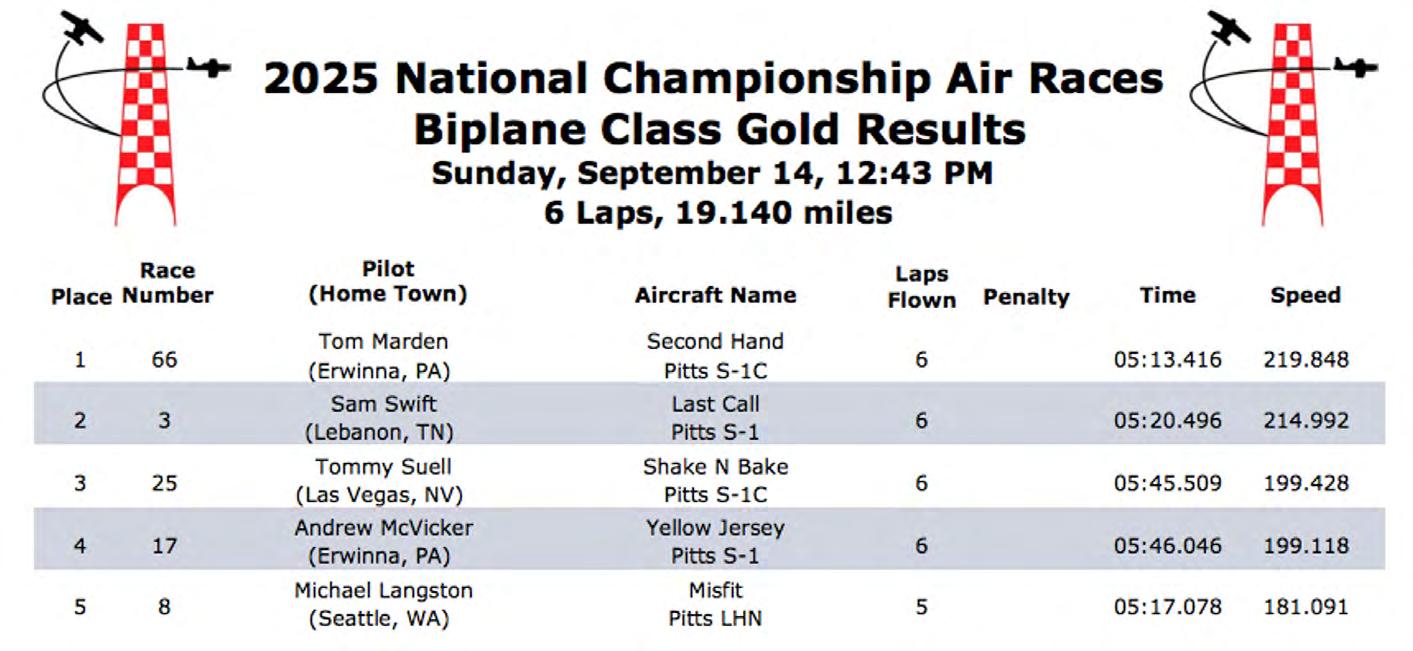

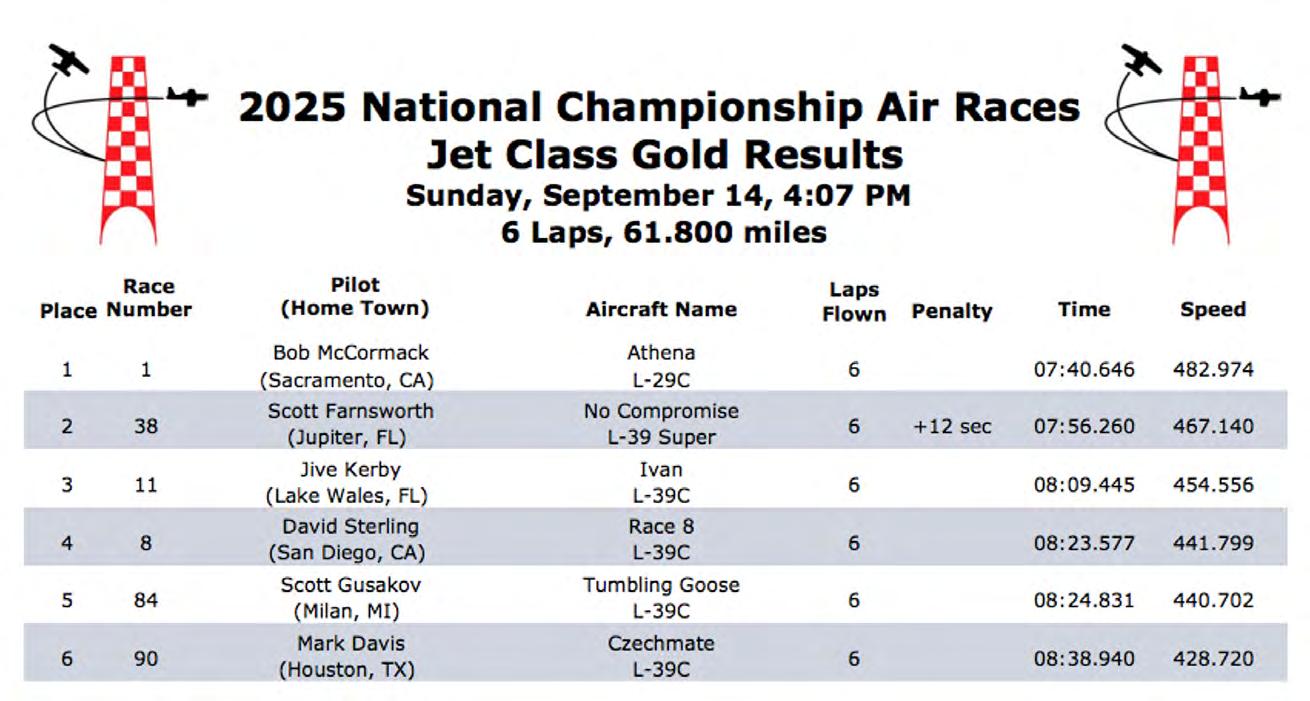
Road #3
CA 94945
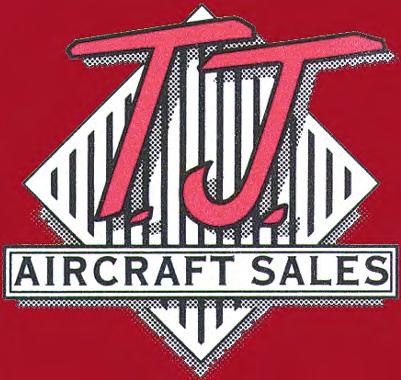





PRICE REDUCED! If a classic, big, brawny, powerful, roomy, impressive, easy to fly plane with convenient entry interests you, we've got one. Shows very well inside and out.
CONTRACT. The world's most popular plane for training and fun flying. Reliable, long-lived, Lycoming O-320 engine with less than 700 hrs. Presents exceptionally well both inside and out. Call T.J. for
STEAL at 69.9K! Great performing 160 HP airplane with 884 lbs of useful load. Sharp interior and sporty exterior.
PERFORMANCE! Super fast. Super high-flying in pressurized turbineengine comfort with 750 horses. What happens when you buy a jet? You have to sell your turbo-prop. Even a gorgeous one like this.
PRICE REDUCED! A breath-taking total restoration of a classic WWII era primary trainer. Fly solo from the front seat. An absolute hoot to fly. Comes with a spare overhauled pickled engine. Add $2,500 to price with electric start.
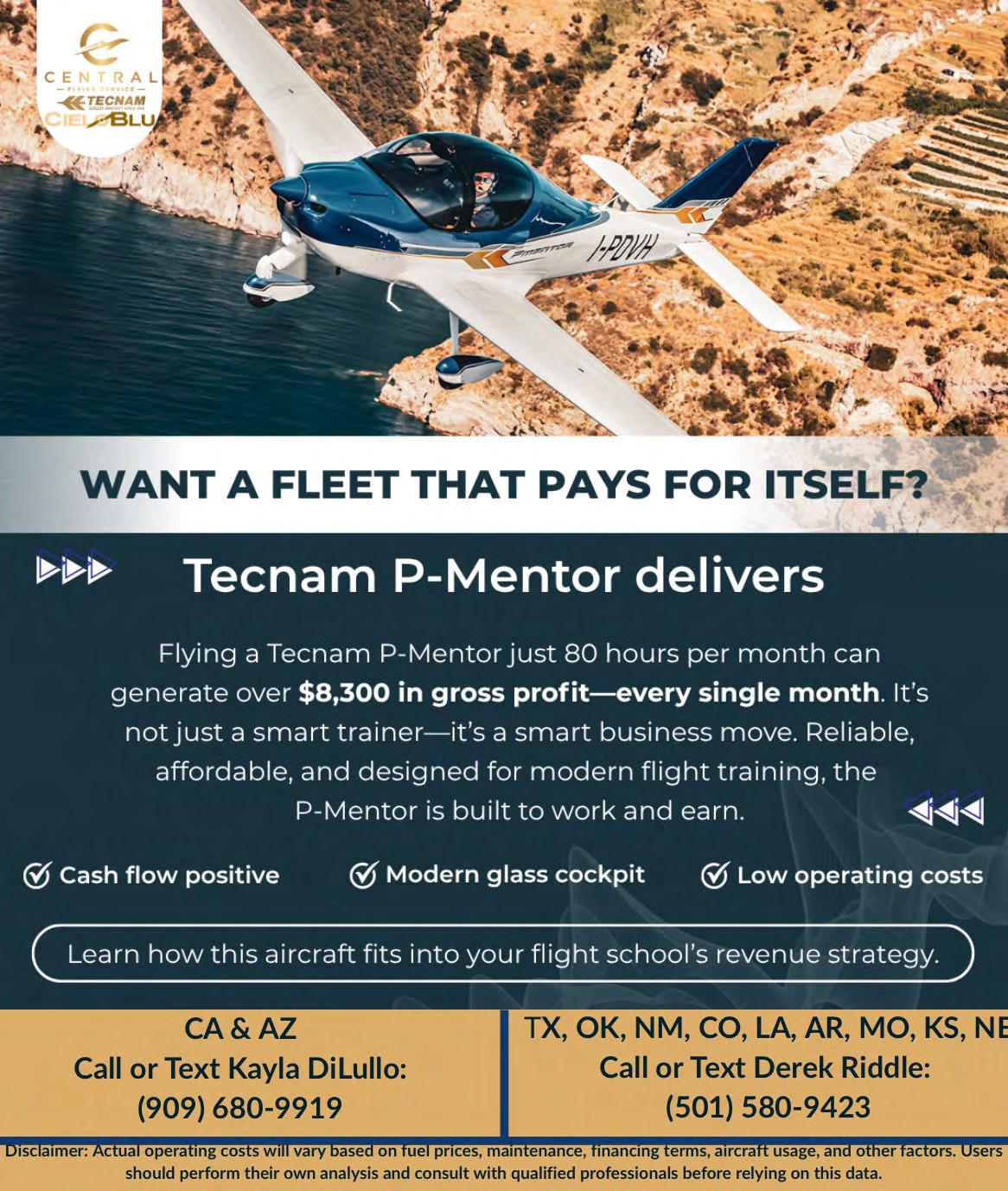
EAA chapters wishing to reserve an Air Academy slot for 2026 may now do so via the online chapter reservation form found online at https://www.eaa. org/education/air-academy/chapter-resources.
Please fill out the EAA Air Academy chapter reservation form to secure a spot at next year’s Air Academy for your chapter’s youth candidate. Make sure to follow the reservation procedures explained on the form. Openings are filled on a first-come, first-served basis!
Young people ages 14-18 will be able to explore aviation through the EAA Air Academy in Oshkosh, Wisconsin. Two camps will take place in 2026 — Explore Aviation and Navigating Horizons.
The Explore Aviation Camp will allow youths to dive into aviation activities and ignite their passion for flight through many hands-on projects, flight experiences, unique aviation sessions, and more!
The Navigating Horizons Camp offers a unique and immersive summer
experience for aspiring aviators who are eager to explore the diverse career opportunities within the aviation industry. This will include tours of aviation specific job sites such as ATC towers and maintenance hangars, career workshops, college visits, and more!
If your chapter has Young Eagles Credits available, then you can use these credits to help send a young person to Air Academy. On the chapters reservation form, you can choose to pay the $200 reservation deposit with Young Eagles Credits. After your reservation has been secured, the Air Academy staff will contact your chapter and ask how many of your remaining YE Credits you want to use for your youth attendee. These credits can cover up to 100 percent of an attendee’s tuition, and they can also cover the transportation costs of sending a youth to the academy.
For more information, please check out the Air Academy Chapter Resources webpage at https://www.eaa.org/education/air-academy/chapter-resources. For general information, see the EAA website at eaa.org.
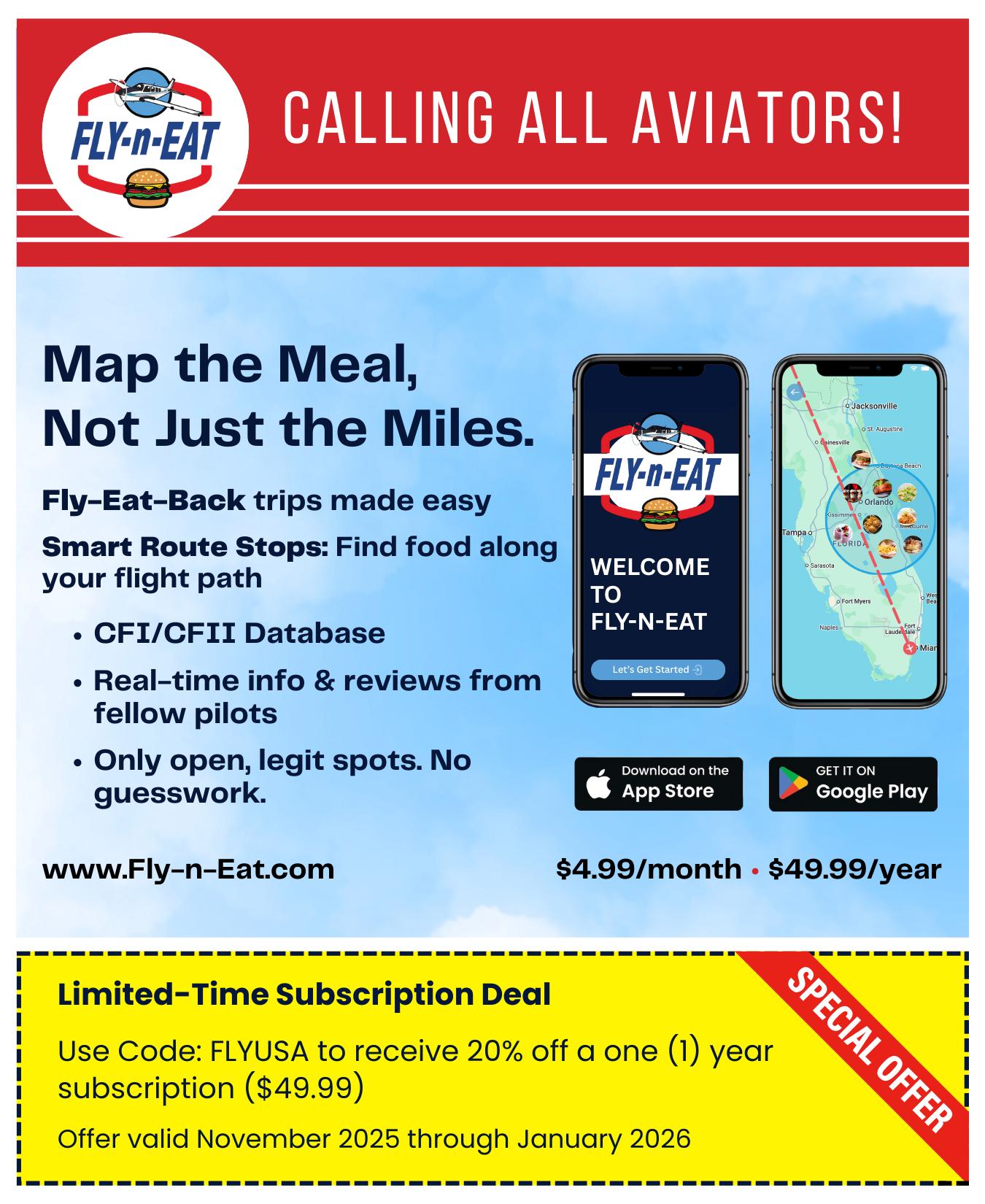



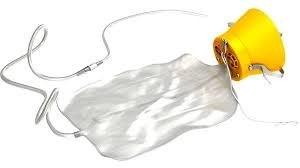

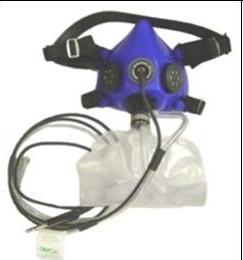
By Feras Shakhatreh
Introduction
Aircraft maintenance is a critical field where safety, reliability, and cost-efficiency must coexist. Maintenance operations involve thousands of parts, detailed inspections, and regulatory compliance. With finite resources, prioritization becomes essential. The Pareto Principle, commonly known as the 80/20 Rule, says that 80 percent of problems usually come from just 20 percent of the causes. This idea helps maintenance teams know what to focus on first (without neglecting the remaining issues indeed).
The Pareto Principle is rooted in the observations of Vilfredo Pareto, who in the 19th century discovered that a small portion of the population owned the majority of Italy’s wealth. Joseph M. Juran later applied this principle to quality management, framing it as a “vital few and trivial many” concept. In maintenance, this concept translates into identifying the few components or issues that generate the majority of problems or costs. Pareto acknowledged that the ratio of vital few to trivial many may be 20 to 80 percent, 15 to 85 percent, or 30 to 70 percent.
Some airplane parts cause more problems than others. If a few parts like sensors or hydraulic systems fail more often, teams can give them more attention. By prioritizing inspection and preventive action on these components, significant gains can be made in operational reliability.
Routine maintenance should not be spread evenly. A Pareto-driven approach enables focused preventive maintenance on historically problematic systems, thus increasing efficiency without compromising safety. Instead of treating all systems the same, mechanics can spend more time on parts that break often. This helps save time and prevents delays.
Stocking every part is costly. The 80/20 Rule helps teams keep the most used 20 percent of parts in stock, saving space and money.
Most mistakes come from just a few common errors. By focusing training on those, teams can reduce human errors.
Enhancing
Audits
Audit reports often show that most findings stem from a few types of non-compliance or procedural gaps. Addressing these issues through targeted corrective actions improves safety management system (SMS) effectiveness. In other words, safety and compliance audits findings come from just a few types of mistakes. Focusing on those can improve safety and reduce repeat issues
An airline managing an Airbus A320 fleet found that 14 percent of its unscheduled maintenance events originated from issues with its fuel and electrical systems. By applying Pareto analysis, the maintenance department restructured inspection intervals, replaced suppliers, and introduced new reliability programs. Within two operational quarters, delays from these systems dropped by 35 percent.
• More effective resource utilization/ Time and money are used more wisely
• Better focus on critical system
• Fewer delays from maintenance problems
• Lower inventory and maintenance costs
• Enhanced safety and audit compliance
• Fewer mistakes
Although the Pareto Principle is powerful, it should not override riskbased assessments. Some components may rarely fail but are mission-critical or safety-sensitive (e.g., flight control computers). These must always be maintained to regulatory standards, regardless of failure frequency. More-
over, good data is needed to apply the rule properly.
The Pareto Principle offers a practical strategy for increasing the efficiency and impact of aircraft maintenance. By focusing on the most influential causes of problems or costs, maintenance teams can improve safety, compliance, and operational performance. However, the approach must be harmonized with risk management protocols, OEM guidance, and regulatory frameworks to ensure that improvements in efficiency do not compromise safety.
References
1. Cruz, A. M., & Huynh, T. (2020). Aircraft Maintenance Management. Aviation Maintenance Publications.
2. Dunford, R., Q. Su, E. Tamang, and A. Wintour. (2014). The Pareto principle. Plymouth Student Scientist.
3. FAA. (2018). Advisory Circular 12017B: Maintenance Control by Reliability Methods. Federal Aviation Administration.
4. Karuppusami, G., and R. Gandhinathan. 2006. Pareto analysis of critical success factors of total quality management. TQM Magazine.
5. Johnson, S., & Carlson, R. (2002). Inventory Management for Aviation Maintenance. McGraw-Hill.
6. Juran, J. M. (1951). Quality Control
Handbook. McGraw-Hill.
7. Juran, J. M., & Godfrey, A. B. (1999). Juran’s Quality Handbook (5th ed.). McGraw-Hill.
8. Kinnison, H. A., & Siddiqui, T. (2013). Aviation Maintenance Management (2nd ed.). McGraw-Hill.
9. Koch, R. (2011). The 80/20 Principle: The Secret to Achieving More with Less (2nd ed.). Nicholas Brealey Publishing.
10. Reason, J. (1990). Human Error. Cambridge University Press.
11. Stolzer, A. J., Halford, C. D., & Goglia, J. J. (2011). Safety Management Systems in Aviation. Ashgate Publishing.
12. Sarkar, A., A. R. Mukhopadhyay, and S. K. Ghosh. (2013). Issues in Pareto analysis and their resolution. Total Quality Management & Business Excellence.
13. IATA. (2021). Maintenance Cost Task Force Report. International Air Transport Association.
14. Polák, P., M. Prístavka, and K. Kollárová. (2015). Evaluating the effectiveness of production process using Pareto analysis. Acta Technologica Agriculturae.
15. EASA. (2020). European Aviation Safety Agency Continuing Airworthiness Requirements. Retrieved from https://www.easa.europa.eu
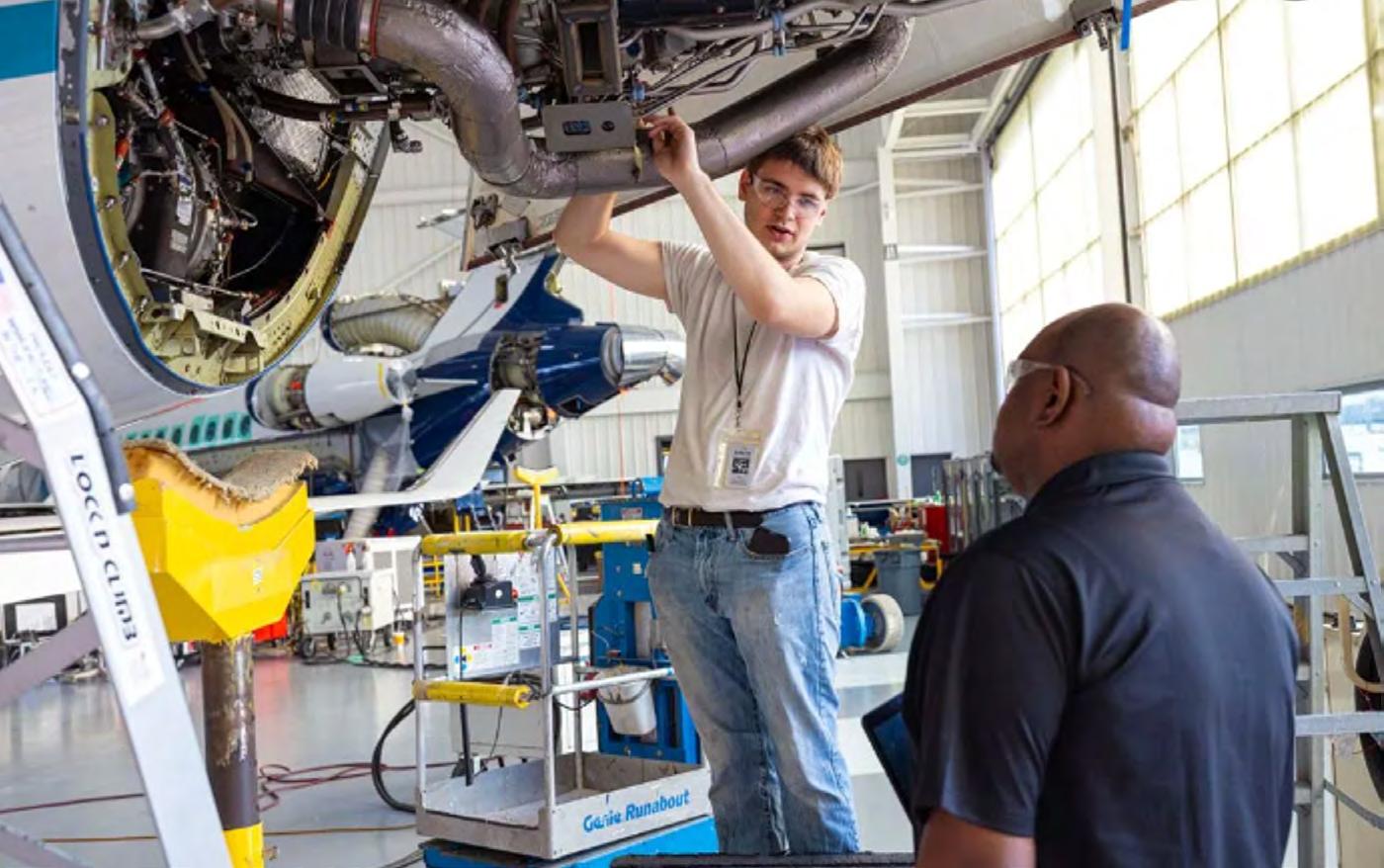
Maintenance operations involve thousands of parts, detailed inspections, and regulatory compliance. The Pareto Principle, commonly known as the 80/20 Rule, says that 80 percent of problems usually come from just 20 percent of the causes. (Photo courtesy National Business Aviation Association)
By Annamarie Buonocore
Wine country has long been a dream destination for travelers seeking rolling vineyards, charming towns, and unforgettable tasting experiences. Now, getting there is easier than ever. Thanks to the recent extension of the Sonoma-Marin Area Rail Transit (SMART) train to Windsor, visitors can skip the traffic and arrive just steps from the The Hampton Windsor, where warm hospitality, thoughtful amenities, and exclusive local partnerships await.
I recently spoke with Brandon Mrkvicka, General Manager of the Hampton Inn Windsor, along with his colleague, Marlow, about how the hotel is embracing this new chapter in wine country travel. Together, they shared how the SMART train is transforming accessibility to Sonoma County, the unique offerings of the hotel, and the experiences awaiting guests once they arrive.
A Gateway to Sonoma County
The SMART train begins in Larkspur, connecting seamlessly to San
Francisco via ferry, and winds its way through Marin and Sonoma counties before arriving at its northernmost stop in Windsor. “It’s a beautiful ride through rolling hills and vineyards,” Brandon explained. “And best of all, it allows guests to bypass commuter traffic. The Windsor stop is just about a 10-minute walk from our hotel.”
For visitors, the convenience means they can reach destinations like Petaluma, Santa Rosa, Healdsburg, and Windsor without ever needing to rent a car. Each stop offers its own charm—historic railroad districts, boutique shopping, dining, and, of course, wine tasting.
Local Flavor, Hampton Hospitality
The Hampton Inn Windsor prides itself on offering more than just a place to stay. Brandon highlighted the staff’s dedication to personalized, attentive service: “Our team truly cares about making each guest feel welcome.”
Amenities include a resort-style outdoor pool with hot tub, a renovated 24hour fitness center with Peloton bikes, and pet-friendly accommodations. Guests also enjoy complimentary hot
breakfast daily, with nearby options for dining ranging from southern-inspired fare at Sweet T’s to California cuisine at Kin Windsor.
Wineries, Breweries, and Bikes
For wine lovers, the hotel has built strong partnerships with local wineries such as Notre Vue Vineyards and Limerick Lane Cellars. These partners are featured in the hotel’s exclusive “Windsor the SMART Way” package, which combines train travel, lodging, and wine tasting tours. Guests can even enhance their visit with guided cycling tours through scenic vineyards or unwind with local craft brews at Barrel Brothers Brewing Company or the famed Russian River Brewing facility.
Aviation Connections and Added Perks
Located just a few miles from Charles M. Schulz–Sonoma County Airport (STS), the hotel has deep ties to the aviation community. Partnerships with Sonoma Jet Center, Kaiser Air, and veterans’ flight programs highlight The Hampton Windsor’s commit-
ment to service beyond hospitality. As a special perk, pilots presenting a valid license at check-in receive a $15 nightly Lyft voucher, making transportation seamless whether guests arrive by train or plane.
Marketing efforts for the “SMART Way” package are already in motion, with cross-promotion from SMART’s PR team, social media campaigns, and targeted outreach to highlight Windsor as the new gateway to Northern Sonoma County. With harvest season around the corner, the Hampton team expects demand to grow as visitors embrace the stress-free travel experience.
As Marlow shared, “This package has legs. For anyone looking to access wine country without the hassle of traffic, Windsor is the perfect place to start.” For more information, visit Hampton Inn & Suites Windsor - Sonoma Wine Country in Windsor, California - ReservationCounter.com.
When eagles, hawks and albatrosses fly, they have the capability to catch a ride on winds and thermal currents, effectively harvesting energy from the atmosphere and converting it to flight.
Could drones be programmed to soar in the same way — not only to sense air flow but to read the weather and choose the most energy-efficient flight paths in real time?
Embry-Riddle researchers are aiming to accomplish just that while participating in the Defense Advanced Research Projects Agency (DARPA) Albatross program, said Michael Kinzel, associate professor in the Department of Aerospace Engineering.
“The Albatross project is about designing intelligent gliders that can fly longer and more efficiently by learning from nature — specifically mimicking how birds such as an albatross use wind to soar,” said Sweety Sarker, Ph.D. candidate in the Department of Aerospace
Engineering. “The goal is to combine real-time weather forecasting with flight planning, so the glider can adapt its path to take advantage of the wind.”
The Embry-Riddle component of realizing these gains is weather prediction and is being developed by Kinzel, Sarker and Brendon Cavainolo, a postdoctoral scholar in Aerospace Engineering.
The effort “utilizes weather forecasts to build more detailed, microscale models that directly capture wind details around topography and waves,” said Cavainolo. These microscale models are being explored to either communicate with the glider from servers, or to “run onboard, where the models guide the glider to make decisions in real time,” Sarker said.
“Modern machine-learning algorithms combined with a range of computational fluid dynamics methods are how we are combining conventional
and modern technology to help us succeed,” said Cavainolo.
Kyle Collins, research assistant professor in the Aerospace Engineering Department and director of the Eagle Flight Research Center (EFRC), is a co-principal investigator on the project and leads a team that will conduct developmental testing of the system.
The EFRC team is currently evaluating sensing technology for the marine environment and plans to support flight test campaigns over water. EFRC’s flight research experience and access to such marine environments support the marine-flight mission goals of the program,” Collins said.
Embry-Riddle received $1.4 million from DARPA to conduct this research, which also includes the flight testing over water. The researchers say soaring technologies would be most beneficial with the winds and weather influences found over and near the ocean.
Sarker is developing physics-informed neural networks (PINNs) to model the complex aerodynamic flows surrounding the glider. In this application, these networks enable machine-learning predictions of airflow by embedding flight parameters governed by the laws of physics. “My work focuses on building models that capture airflow around the flight environment,” Sarker explained. “For example, PINNs can approximate local wind fields, which in turn support dynamic soaring maneuvers.”
According to Kinzel, the team expects to achieve predictions in near real-time, allowing for the exploration of a variety of methods. The research program is led by the Raspet Flight Research Laboratory at Mississippi State University and is also in collaboration with the University of Texas at El Paso. Learn more at erau.edu.

One of the truly great things about being an aviation buff is the number of “Goodies and Gadgets” available to play with. Here In Flight USA has collected a few new ones worthy of your consideration.
Aircraft Spruce & Specialty Co. has been the supplier that aircraft builders, owners, pilots, and aviation businesses have depended on since 1965. They carry a wide selection of aircraft parts, building materials, avionics, and pilot supplies, all of which are offered on their website (www.aircraftspruce.com) and in the famous Aircraft Spruce catalog, now over 1,000-pages available for download or for free in print. You can depend on Aircraft Spruce for prompt shipping and competitive pricing on all orders.
Aircraft Spruce is well-stocked with needed avionics and necessary gear to make flying safer and more fun throughout the year! Of course, the autumn months can be great for flying but also, as the weather cools down, this might be a good time to upgrade and freshen up parts and maintenance. Here are some of the latest and greatest items featured by Aircraft Spruce.
Flight Outfitters Flight Deck Pro Bag

The Flight Deck Pro from Flight Outfitters is a new generation flight bag for a new generation of pilots. With its thoughtfully designed layout, featuring a combination of quick-access elastic pockets and secure zip pockets, the Flight Deck Pro effortlessly accommodates all the essentials — from iPads to headsets — while maintaining a professional appearance. “We wanted to create a flight bag that seamlessly merged practicality and professionalism for the modern airline pilot,” said Mark Glassmeyer, founder of Flight Outfitters. “It’s purpose-built for your gear and your demanding role, with organizational features and functionality that simplify your daily routine.”
Ready for flight-level performance from your flight bag? Introducing the Flight Deck Pro from Flight Outfitters. It’s the perfect solution for pilots who are tired of struggling with clunky bags or cheap alternatives. Stylish yet practical — and ready to hang from your suitcase’s J-hook — the Flight Deck Pro features 30 pockets to protect your essential gear. With a mix of quick-access elastic pouches and secure-zip pockets, it’s easy to organize your headset, iPad, flashlight, pens, and all your must-have items. The well-planned layout ensures that all your gear is easily accessible in flight, and the classic black style meets airline uniforms policies.
Each flight bag sells for $129.95.
The Bob Hoover Academy Speed Wax 24 oz. Bottle
Designed with pilots in mind, Bob Hoover Speed Wax delivers a high-gloss finish in seconds. Safe on aircraft exterior surfac-

es, simply spray on and wipe off for a long-lasting shine. Good on wet and dry surfaces. Avoid using on windows.
A portion of each sale benefits The Bob Hoover Academy 501. See a video about the academy on the Aircraft Spruce website where the wax is sold (https:// www.aircraftspruce.com/catalog/cspages/bobhooveracadamy_speedwax.php).
Each 24-ounce bottle sells for $15.95. Also available is a case of 12 (24-ounce) bottles for $148.75.
ASA iPad Kneeboard With Cover
This new iPad Knee board joins the iPad Portfolio Kneeboard in giving pilots greater flexibility to choose the “digital kneeboard” solution that’s best suited for them.

The iPad Kneeboard is a versatile case and kneeboard that helps pilots protect and use their iPad in flight and on the ground. The elastic strap secures the case to the pilot’s leg for in-flight use. The unique plastic cover keeps the iPad screen safe while maintaining full viewing and complete touch-screen functionality, and opens easily to insert or remove your device. The easel folds to position the iPad at a convenient “wedged” viewing angle; alternatively, it can lay flat. The pocket on the back offers room for papers and maps. Openings are provided for charger and headphone/earbuds.
Made of durable fabric with embossed wings. Fits the iPad, iPad 2, and New iPad (iPad 3).
Each kneepad is on sale for $19.95. (iPad not included.)
ASA FAR / AIM Handbook
and Unmanned Aircraft System (UAS) operators, combined with the Aeronautical Information Manual (AIM), and a free email subscription service for you to receive updated information as it is released by the FAA.
Convenient handbook-sized 6-inch by 9-inch format includes:
• Regulations pertinent to pilots, drone operators, and instructors, including Title 14 Parts 1, 5, 43, 48, 61, 67, 68, 71, 73, 89, 91, 97, 103, 105, 107, 110, 119, 136, 137, 141, and 142; Title 49 NTSB 830 and TSA 1552; and the Aeronautical Information Manual and Pilot/Controller Glossary
• Free updates available online and via email subscription service for instant access to regulation and procedural changes. Sign up on our FAR/AIM Updates page.
• Changes and updates since last edition clearly identified.
• Unabridged AIM, including full-color graphics.
• Comprehensive FAR/AIM index.
• Access to additional online resources: ASA’s suggested regulation study list for each certificate and rating, the Pilot’s Bill of Rights, and NASA Aviation Safety Reporting System Form.
• Tabs printed in margins for quick reference.
ASA’s FAR/AIM books have been the standard regulatory reference of the industry since 1940. ASA consolidates the FAA regulations and procedures into easy-to-use reference books of information pertinent to pilots, flight crew, and aviation maintenance technicians.

ASA has built a reputation for providing the aviation community with the most accurate and reliable FAR/AIM products available. The 2026 FAR/AIM book contains complete and up-to-date information from Titles 14 and 49 of the Code of Federal Regulations (14 and 49 CFR) pertinent to General Aviation, Sport Pilots, Flight Instructors,
Did you know the ASA FAR/AIM app includes regulations from the FAR/ AIM, FAR for Aviation Mechanics (FAR-AMT), and FAR for Flight Crew (FAR-FC)? New app purchasers will get the same bonus features and forever updates existing users have been enjoying for more than 10 years.
The ASA FAR / AIM Handbook sells for $19.95 in the softcover book format, eBook format or eBook PDF. Flight schools may wish to purchase a case of 12 paperback books for $239.40.
McFarlane’s Aircraft Wheel & Prop Balancer Tool Tire balancer for 1-inch, 1-1/4inch, and 1-1/2-inch axles, including Cessna 300 and 400 Series tapered axles with 1-1/2-inch and 1-inch bearing bores. Replaces P/N TOOL108.
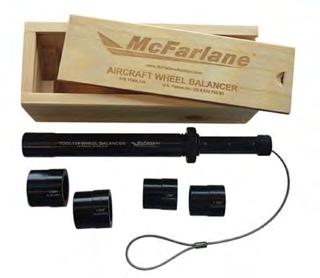
Wheel & Prop balance is important. Aircraft tires spin 1.6 times faster than car tires. Out-of-balance wheel cause a long list of maintenance problems:
• Uneven tire wear
• Premature bearing wear
• Shimmy and resulting torque link damage
• Destructive and distracting airframe vibration McFarlane’s Wheel / Propeller Balancer is a suspension wheel balancer with a patented design featuring a pivot point that is easily adjustable on-the-fly for maximum balance sensitivity. It is small enough to fit in a tool box and doesn’t require a bulky stand. The design is more precise than other static balancing methods, and allows the wheel to be balanced with the bearings and seals installed.
It’s fast and easy! Due to the horizontal balancing orientation, test weights can be temporarily set in place and easily adjusted while balancing. This eliminates the need to tape the test weights. The balancers are precision machined with a black, hard anodized finish, and come in an oiled wooden case. This is a lifetime tool that fits almost all light aircraft wheel/tire assemblies.
• On-the-fly adjustable pivot point for maximum sensitivity (U.S. Patent No. US 9,032,793 B1)
• Portable - small enough to fit in your tool box
• Does not require removal of bearings or seals Each unit sells for $378.
Look for Aircraft Spruce at the following events:
• Oct. 14-16 – National Business Aviation Association (NBAA) Convention, Las Vegas, NV.
• Nov. 17-20 – NAAA AG Aviation Expo, Reno, NV.

By Lea Buonocore
On Oct. 18-19, 2025, the Santa Maria Airport (SMX) will be hosting their annual Central Coast AirFest in Santa Maria, Calif. This event will be an exciting and fun-filled weekend of adventure and interesting aircraft. Visitors will be able to see vintage warbirds, aerobatics, and military demos. This is also a great opportunity for the community to come together and enjoy aircraft and fellowship.
During the event, you can experience the P-51 Mustang, which is a famous aircraft used by the United States Air Force during World War II. This jet is packed with interesting history and also has roots in the Korean War as well. There will also be a wonderful opportunity to ride in a P-51 Mustang if you desire. Along with the P-51, attendees will be able to enjoy and learn about other aircraft.
You can see amazing acrobatic performers, including T-33 Acemaker Avi-
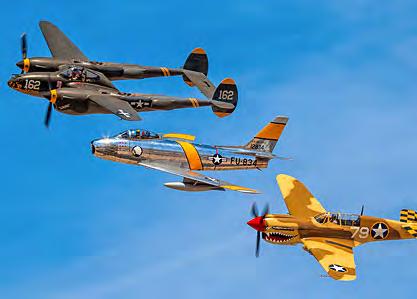
ation, Plum Crazy P-51, Sea Fury, F7F Tigercat, and many more. There will be military demos, including USAF F-35 Demo Team and several more. Lastly, you can count on seeing some pretty incredible Warbirds – the P-51 Mustang is one of them – along with a P-38 Lightning, and a P-40 Warhawk.
The Central Coast AirFest is not one to be missed and can be fun for the entire family. It’s a good chance for the youngest community members to learn about aviation and awesome planes, and there is also a youth art contest. This art contest gives young artists a chance to explore and demonstrate the exciting world of flight in the form of amazing art. Artists can draw planes, warbirds, and aircraft using their own imagination and creativity.
Overall, take some time to come and enjoy the Air Fest. This educational and fun event will help everyone learn more about aviation and gain an appreciation for the role of aircraft throughout history. For more information, including
Continued on Page 42



















USPAP
Aircraft

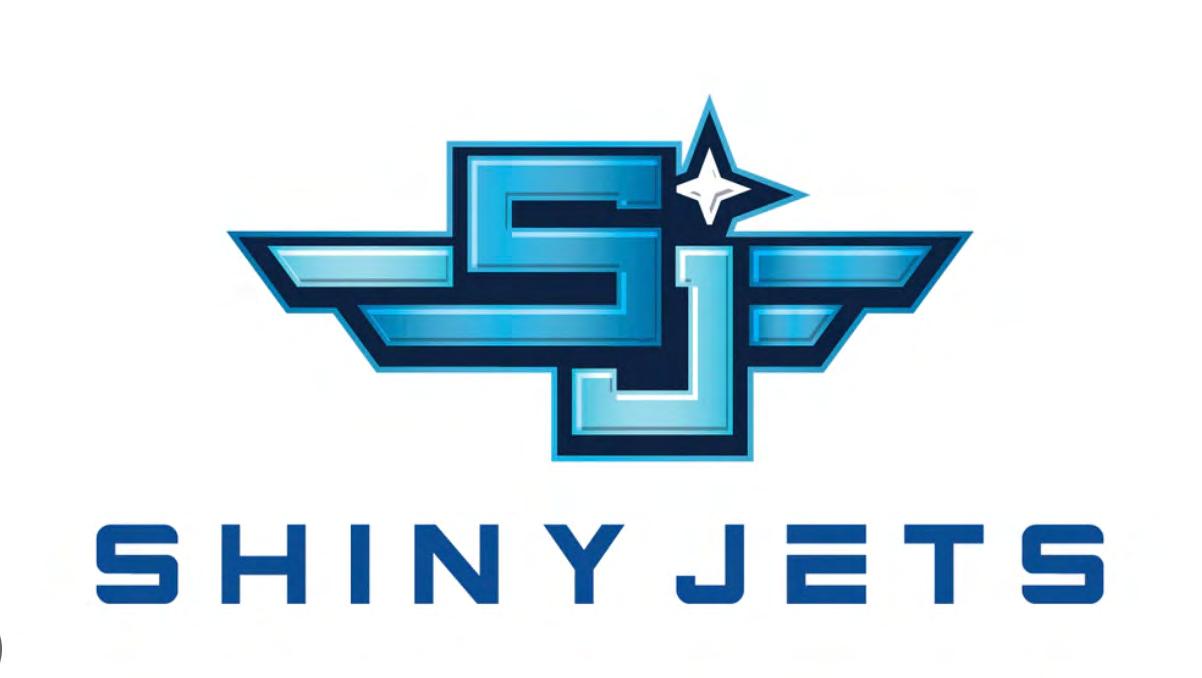





A residential paradise is growing out of the desert in Dubai and Schweiss Doors is playing a major role in creating this new residential Eden. Nad Al Sheba Gardens, a new neighborhood from real estate developer Meraas, will provide luxury living in the fast-growing city of the United Arab Emirates.
Schweiss Doors was contracted by Dosteen Doors and Engineering Services to provide 228 liftstrap bifold doors for Nad Al Sheba Gardens. The bifolds will be used as garage doors for the new homes and vary in size ranging from 18- to nearly 25-feet wide and between 8- to 10-feet high. Crews from Dosteen install the bifold doors and clad them in an aluminum-ribbed paneling that coordinates with the community’s modern design.
This huge order of doors required coordination and communication between Dosteen and the team at Schweiss Doors over several months. The doors were split into two different orders and shop drawings for each door had to be created and approved, a process that took about a month for each order of doors. Once the drawings were approved by Dosteen, Schweiss could
Continued from Page 10
planes you are flying, no more than 59 knots. You will be limited to flying under 10,000 feet, unless within 2,000 feet of the surface. No problem with flying in complex airspace or in complex airplanes, as your current pilot certificates qualify you for such activity. Flying as a Sport Pilot allows you to simply drop off the “medical radar.” If altitude limitations, night flying limits or number of passengers become an issue, BasicMed could be the solution, as you already meet the requirement to have previously held a Class medical. Of course, one can always go back into the Class medical system if Commercial or ATP privileges become an issue.
I am a student pilot, having about 50 hours of flying time in a Piper PA-28140. After three years of effort, I have not been able to complete my Private Pilot training. I have had to change in-
begin manufacturing the doors. Construction of the first 93 doors started in July 2024 and completed in March, just as the building of the second order of 135 doors began. All of the doors are planned to be completed by the end of summer.
On Aug. 4, representatives from Dosteen and Nad Al Sheba Gardens came to Schweiss Doors to get a firsthand look at the operation and check in on the progress of the second order of doors. The visit included a tour of the manufacturing facilities at Schweiss, as well as a meeting with company ownership and members of the sales and design team. The visit was a success and the second order of doors will soon begin the long trip to Dubai.
Dosteen set up the shipping for all the doors and it isn’t a short journey. It begins at Schweiss Doors in Hector, Minn., where the doors are loaded into shipping containers and delivered to a port on the East Coast of the United States. The containers are then loaded on to a shipping freighter and travel across the ocean to a port in Oman. The final leg of the journey gets the doors to Dubai and the busy construction site of the Nad Al Sheba Gardens. The first
order of doors has already reached the site and installation is well underway.
The Gardens, when completed, will have both standalone villas and townhomes along with a long list of amenities, including swimming pools, running trails, parks, retail space and a school. The development will be con-
structed over several phases, as units are sold, with home prices starting near $2 million. The most recent phase under construction is scheduled to be completed by the end of the year. For more information about Schweiss Doors, especially for doors for hangars, visit www.bifold.com.
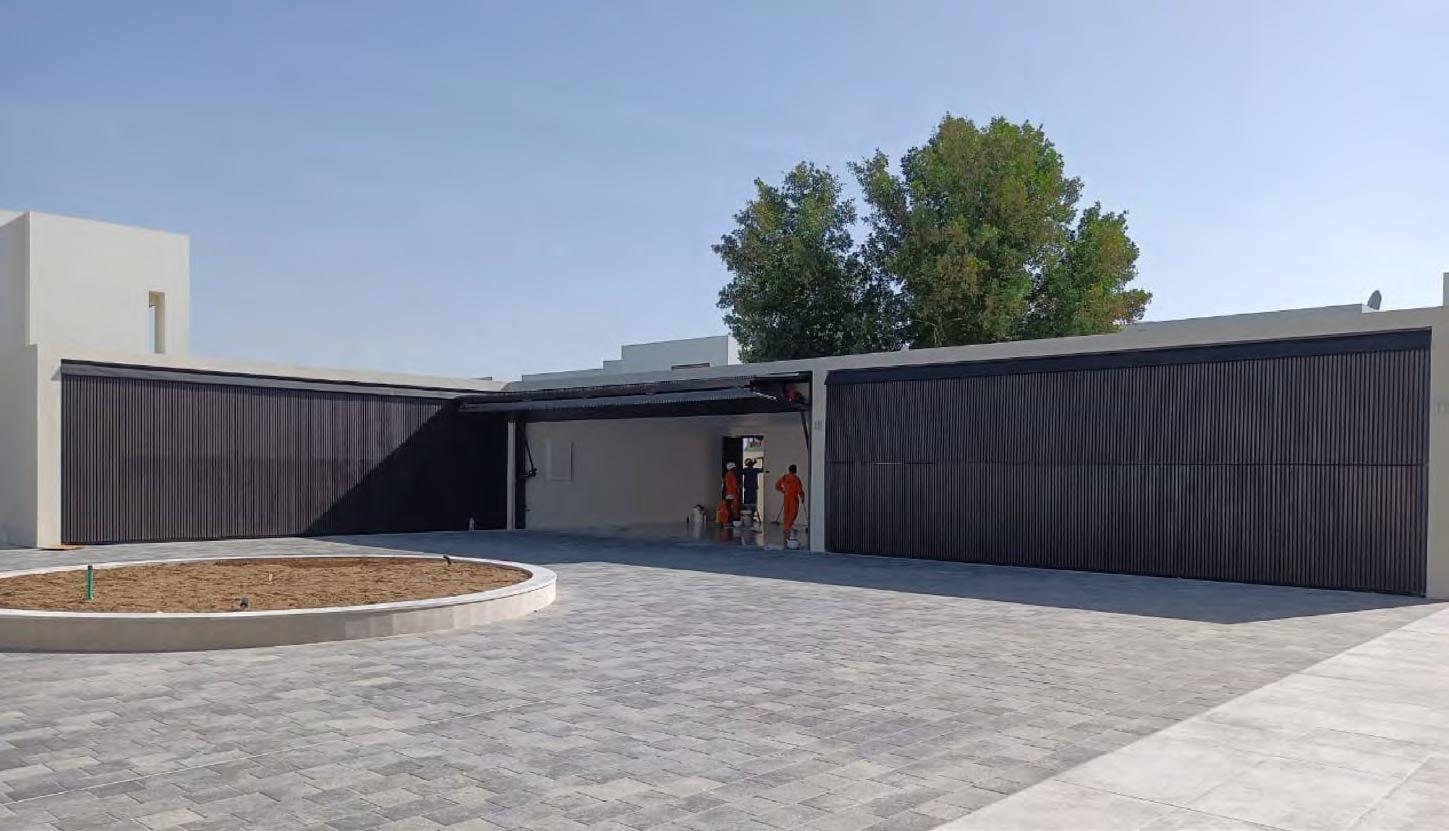
structors five times. Is Sport Pilot a way to shortcut my way to pilot certificate for simple recreational flying, typically with only one passenger?
The basic Sport Pilot Certificate requires a minimum of 20 hours of total time, divided into 15 hours of dual instruction, five hours of solo, two hours of cross-county training with 10 landings at an airport involving a traffic pattern. One solo cross-country must be flown with a landing at an airport more than 75 miles from the departure airport, incorporating landings at two (or more) locations that are more than 25 nautical miles apart. In all probability, you have met those flying time minimums. While Sport Pilot 1.0 required that all solo flights be done in a plane that met the old LSA definition (gross weight less than 1,320 pounds plus speed limits of 120 knots CAS), the dual was always authorized to be done in a
contemporary trainer, such as the Piper you are now flying. You can skip the night and IFR training. You would need a minimum of two hours of dual specifically in preparation for the check ride. Your solo time in the Piper is questionable, and I do not have an answer as to whether or not it can be used. The FAA has yet to clarify that issue. But assuming your PA-28 solo time is not credited for Sport Pilot 2.0, just an additional five hours of solo would be needed, which would include the cross-country solo requirement. You probably already have a Class medical, so as a Sport Pilot you can just let that lapse or go for BasicMed when your class medical expires. BasicMed is important to a Sport Pilot in that it lets you fly at night, given needed logbook endorsements. Your solo and cross-country endorsements would need to be changed to those specific to Sport Pilot. These can be found
in AC 61-65J. It remains to be clarified as to what may carry over from uncompleted Private Pilot training into Sport Pilot 2.0. Stay tuned!
I have not started taking flying lessons but signed up for a Private Pilot ground school program to learn more about what I am getting into. Now I hear about Sport Pilot. Is a Private Pilot ground school applicable to Sport Pilot and is there an advantage to switching to Sport Pilot?
Those questions get you a “YES” and “YES.” The 60-question Private Pilot Knowledge test covers everything a Sport Pilot should know, plus material that is not in the 40-question Sport Pilot Knowledge test. Subjects such as radio navigation, weight and balance and performance are not covered in the Sport Pilot written but are very specifically covered in the oral part of the check ride. Sport Pilot does not give you a free ride with respect to knowledge. The Private
Continued on Page 35
Pilot written exam does not cover Sport Pilot restrictions and endorsement requirements. Any training organization telling you the Private Pilot course covers everything in the Sport Pilot exam is not being truthful. You should be given
an addendum that is specific to Sport Pilot. While the Sport Pilot knowledge test is very out of date (contains questions on two-stroke engines and hand propping), it does hit fundamentals of dead reckoning and pilotage navigation, skills forgotten (or never learned) by those dependent upon GPS. As for
the flying part… plan on spending half of what you would on a private pilot certificate… good news… eh?
The minimum hours required for a sport pilot Certificate are just that, minimum. The Sport Pilot certificate requires skills that are well defined in the Sport Pilot Practical Test Standard
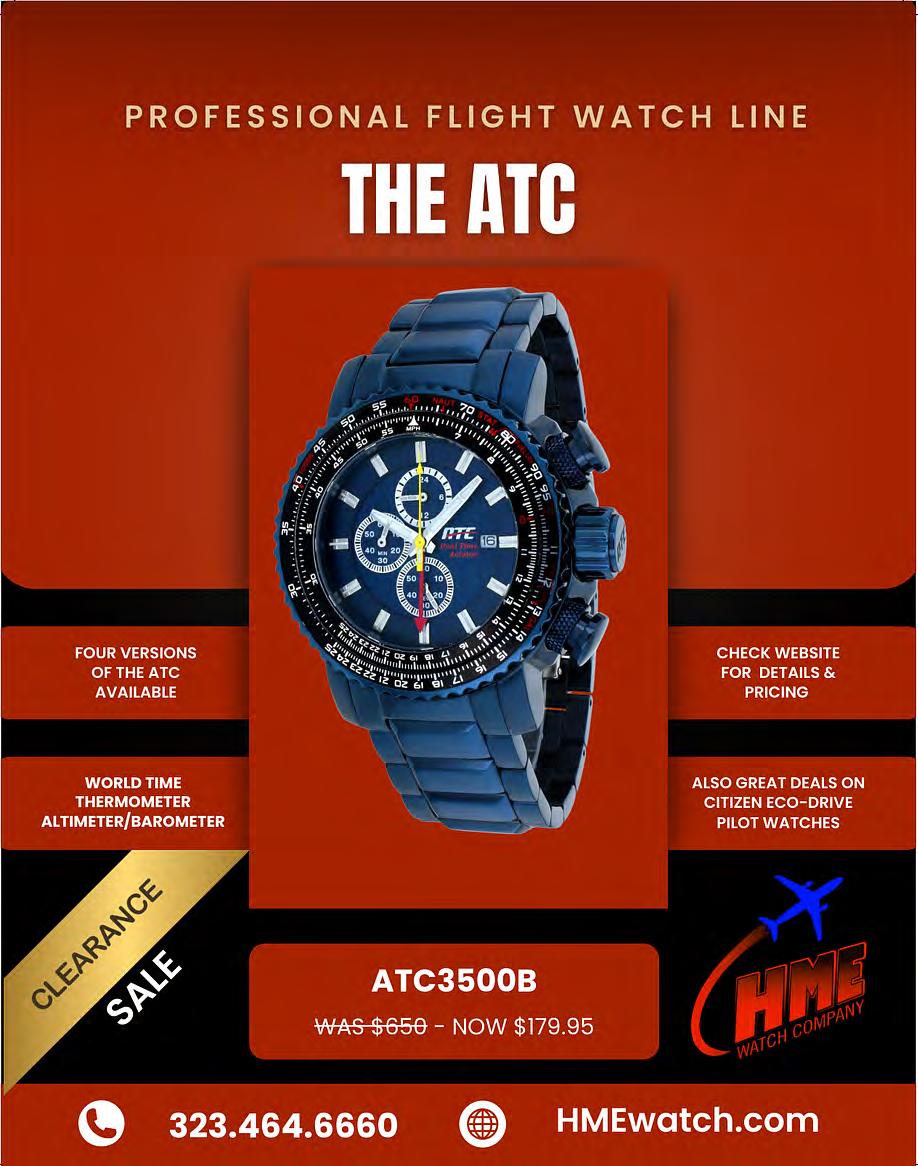
(PTS), which was upgraded as of November 2023. And these skills are virtually identical to those required for Private Pilot. The basic Sport Pilot certificate does not authorize operation in complex airspace, night flying or a requirement for IFR training. Sport Pilot is the quintessential “stick and rudder” form of flying… the same style of flying this writer started out with in 1956. And, keep in mind, all training and flying done under the privileges of a Sport Pilot are applicable to higher ratings, should you decide to go for that airline job as an ATP!
I stopped by a popular flight school in my busy metropolitan area to ask about Sport Pilot as a first step in becoming a pilot and was quickly rebuffed. The salesperson pointed out that the minimum required hours would not produce a safe pilot and that their busy metropolitan area was no place for a poorly trained Sport Pilot. In short, it would be “stupid” to pursue a Sport Pilot certificate, followed up by a pitch for a $12K Private Pilot program. Is this guy right? The only thing right about what you heard was the word “stupid,” but it should have been expressed towards the policies of the school, not you. The Sport Pilot certificate gives you a “cafeteria” approach to learning to fly, dependent upon your needs. Private Pilot standards assume that every Private Pilot will be shooting touch and goes at Atlanta International. This assumption means that much of your private pilot training is spent teaching and testing you on information you may never use. That school should have known that Sport Pilot incorporates specific endorsements that allow a Sport Pilot to operate in Class “D” and “C” airspace, plus communicate, and participate in complex airspace under the jurisdiction for ATC. This is the same training a Private Pilot would receive. The same goes for a complex airplane or night flight. Folks training in dense metro areas will end up spending more on the Sport Pilot certificate than those learning to fly in rural areas of our country, which, in fact, account for about 80 percent of all airports and airspace.
So, there you have it, a sample of the questions received by this writer on a weekly basis. Stay tuned as In Flight USA digs in deeper, such as… are there enough Sport Pilot DPEs to support this new certificate?
Weather can be unpredictable — but your aircraft protection doesn’t have to be. With wintery days on the forefront, look to Bruce’s Custom Covers to help your aircraft weather stormy days.
Actually, from sudden spring showers to long sunny days to blistery cold winters on the ramp, Bruce’s Custom Covers are the perfect solution to covering and protecting your aircraft. From canopy, wing, and horizontal stabilizer covers, Bruce’s has a way to solve any protection cover concern.
Customizing a canopy cover pattern for a Waco, folding intake plugs for a Boeing 787, and custom GSE covers for ground service crews are some of the diverse jobs that Bruce’s takes on. “We offer such a wide variety of products; there is no telling what will come across our desks,” said Bruce Perch, President of Bruce’s Custom Covers based in Morgan Hill in northern California. However, the company services
customers throughout the country and Canada.
Some featured products include:
• Red Gear for any aircraft – Exhaust covers, engine plugs, pitot covers and so much more.
• Designed to fit every window, HeatShields are easy to install and will protect your avionics for many years.
• Bruce’s covers provide full engine protection by enclosing the entire cowl, including the air-cooling and induction inlets.
“At our company we’re all about cover design, both maintaining the nearly 15,000 products that we’ve already developed, and creating new ones almost every day. I know it’s hard to believe that so many products could be available just to cover and protect airplanes, but it’s true. The amazing thing to me though, is that we’re still coming


up with new designs to satisfy our customers’ requirements worldwide,” said Perch.
Bruce’s welcomes customers who wish to visit the plant, as well as those wishing to take the virtual tour. Learn more about Bruce’s Custom Covers, where you can also order products, from the website, aircraftcovers.com or telephone toll free 1-800-777-6405.
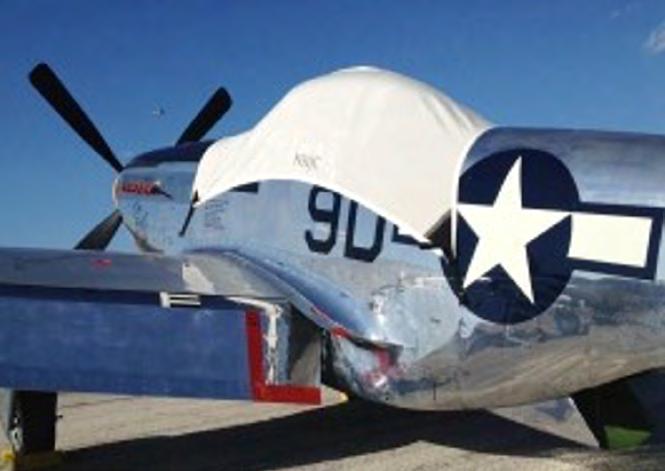


DBT Aero recently announced the appointment of Tom Anderson, a seasoned aviation executive with extensive experience at renowned airlines and aerospace manufacturers, to its advisory board. Anderson joins the company at a crucial point as DBT Aero prepares to launch production of the revolutionary DBT 2LX, a two-seat ready-to-fly and kit aircraft designed for the future of aviation.
Anderson’s career includes senior leadership positions at JetBlue, Archer Aviation, Breeze Airways, ATR, Airbus, and Virgin America. At JetBlue, he was a founding team member, helping expand the airline’s aircraft programs and technical operations.
Most recently, he served as Chief Operating Officer of Archer Aviation, a leader in urban air mobility.
“I’ve been fortunate to help scale some of the most exciting companies in aviation, and I believe DBT Aero represents the next great leap,” said Anderson. “The DBT 2LX is an aircraft built for the real-world missions of today’s pilots — with engineering elegance and a forward-thinking ecological approach. I’m excited to support the team with strategic guidance, especially as they expand fundraising and partnerships.”
As the newest member of DBT Aero’s already impressive advisory board, Anderson will focus on enhancing financial strategy, indus-
try partnerships, engaging investors, and operational scalability. His expertise in both commercial aviation and next-generation aerospace provides DBT Aero with a strong boost as the company moves from prototype to production.
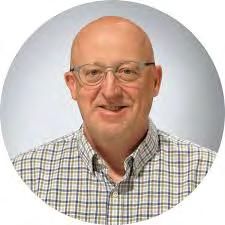
Tom Anderson, a seasoned aviation executive, recently accepted a position on DBT Aero’s advisory board. (Photo courtesy DBT Aero)
“Adding Tom to our advisory board is a powerful endorsement of the DBT 2LX program,” said Michael Duke, CEO of DBT Aero. “His leadership at companies like JetBlue and Archer provides us with valuable insights as we transition from development to commercialization — especially in fundraising, partner-
ships, expanding operations, and connecting with operators, flight schools, and flight clubs.”
The DBT 2LX is a highly efficient, MOSAIC aircraft designed to be the world’s fastest, safest, and most luxurious personal aircraft, doubling as an advanced trainer and fleet option for schools and clubs. Featuring a futuristic, ultra-efficient double-box tail and swept wing design that delivers exceptional speed, safety, and luxury.
DBT Aero is now accepting reservations for delivery positions for the DBT 2LX in both ready-to-fly and kit-built configurations. To learn more about the DBT 2LX aircraft or reserve a delivery position, visit https://DBT2LX.com. To learn more about DBT Aero, visit https://DBTAero.com.

By Paul T. Glessner
Twenty-two others and I enjoyed a tour of Edwards AFB June 11th. I met the beautifully air-conditioned coach bus hosted by American USAF hero, (ret.) Col. Bob Ettinger and his lovely wife, Kathryn, on behalf of the Aero Club of Southern California (ACSC) at the visitors center outside of the West Gate at 10 a.m. and off we went. We were joined by Mr. James P. Stossel, Deputy Director of EAFB’s Public Affairs onboard the bus to administer the fun and education about to abound.
Firstly, let me tell you about (ret.) Colonel Bob Ettinger having served 27 1/2 years in the United States Air Force as a fighter pilot, combat pilot, experimental test pilot and flight test manager. His last position in the USAF was Vice Commander of the Air Force Flight Test Center (AFFTC) at Edwards AFB, Calif. As a test pilot, he was the first USAF pilot to fly the F-16 Full Scale Development aircraft. The Colonel has over 6,600 hours in more than 100 different types of aircraft. He has a Bachelor of Science Degree in Mechanical Engineering from the University of California at Berkeley and a Master of Science Degree in Aeronautical Engineering from Ohio State University.

guez Hills in Los Angeles, which featured aircraft from the U.S. and Europe to educate the public about the new technology of flight. The ACSC has sponsored the annual Howard Hughes Memorial Award since 1978 to honor individuals with outstanding career achievements in the realms of aviation and aerospace. The honorees include a Who’s Who of leaders in these fields, and the award is one of the most prestigious of its kind. I remember attending the 2000 award dinner where my good

friend, Willis Hawkins, retired senior vice president and director of Lockheed Corporation and principal designer of the C-130 was feted. Yes, everybody that mattered, was present.
we made our first stop at building, err, hangar 1600. This is definitely one of the world’s largest hangars that can fit four B-52s in it and still have plenty of room. There were two B-1 Bones, a few T-38s and prop trainers in there and echoes could almost be heard. As the coach stopped, I noticed the base commander pull up and park in his prescribed parking slot and entered 1600. Like a well-oiled machine, Brig Gen Douglas ‘Beaker’ Wickert, Commander of Edwards AFB and the 412th Test Wing was at the door welcoming each guest. First class. Ha, I was the ‘caboose’ and when he saw me, he bellowed, “They will let anyone in here” and gave me a man-hug. [Back story, he and his family as well as the previous commander, MGen Evan ‘Weed’ Dertein’s, enjoyed Nick Spark’s DVD of “The Legend of Pancho Barnes and the Happy Bottom Riding Club;” a 2009 American documentary film that chronicles the life of aviation pioneer Florence Lowe “Pancho” Barnes that I gave to the Major General when he attended my birthday gathering in March of 2024. Beaker was off doing F-35 training but received it weeks later. Besides knowing I worked F-22, F-35 and MQ-9A.]
The general gave an incredible visual PowerPoint overview of EAFB and the various missions and programs they administer besides all of the play-
ers: civilians employed and contracting companies utilized. General Wickert was so engaging and affable. He answered our sporadic questions in detail as they arose with no issues. Literally, we could have stayed there in awe for more than the allotted hour. We were at the Mecca of U.S. Air Force aviation. Period.
After taking in the breadth of the 1600, we climbed onboard the coach to go to the F-35 compound. I had worked the same program back in 2010-11. We left our iWatches and iPhones on the coach and were met by BANDYXXXX, F-35 test pilot, at the main gate and shortly thereafter gave an impressive overview of the F-35. Aside from the external cameras that feed

Secondly, the history of the Aero Club of Southern California goes back to 1908. The Club sponsored the 1910 Historical Air Meet Show at Domin-
Another piece of key aviation FYI. In the early 1980s, the ACSC successfully campaigned to save Howard Hughes’ famed HK-1 Flying Boat, then and now the world’s largest aircraft, from being scrapped. For more than a decade, the ACSC worked with several commercial exhibitors to show the airplane — fondly nicknamed “The Spruce Goose” — to the public in a huge, domed facility at Long Beach. When that facility closed in 1992, the ACSC arranged for the Flying Boat to be moved to McMinnville, Oregon, where it is the centerpiece of a major aviation history museum today. Imagine if we did not have the Flying Boat to forever gawk at? Thanks, ACSC. Please learn more and join ACSC at www.aeroclubsocal.org.
Well, everyone was bright eyed as

the pilot’s helmet with views as if one can look right through its structure, we were told of the various differences of the C model made for carrier landings. The wing area is increased aside from much, much beefier main and nose landing gear. One point I found new per the pilot was that in the early phase of its development, they put children in a cockpit mock-up to learn the intuitive ways to convey information. Neat and novel, per se.


Continued from Page 38

F-35 Gen III HELMET and HMDS. Cost ~$430,000 (Photo courtesy of Collins Aerospace)
We headed to Club Muroc for a delicious, per usual, lunch and conversation and some ACSC administrative updates to the group. The group saddled up and launched off to the USAF’s


new T-7A trainer hangar; replacement for the supersonic Northrop T-38 Talon. On September 21, 2023, the first Red Hawk (tail number APT-2) was shipped to the US Air Force.
The lovely aerospace day ended with a grand visit to Edwards Flight Test Museum. There are so many historical
artifacts and aircraft that are presented both indoors and outdoors. While the museum has always been on the base, its vision is to create a phenomenal experience more easily accessible outside of the West Gate on Rosamond Blvd. Please see https://flighttestmuseum.
org to join and learn more about the museum and its great features. Also, Mr. Stoussel invites all to sign up for EAFB’s emailed Newsletter at www.edwards.af.mil/ News/412TW-PA-Updates/
The General Aviation Manufacturers Association (GAMA) on Sept. 9 published the Second Quarter 2025 General Aviation Aircraft Shipment and Billing Report. The results for the first six months of 2025, when compared to the same period in 2024, show increased shipments in the business jet and piston airplane sectors and an increase in the overall value of aircraft shipments.
Aircraft shipments through the second quarter of 2025, when compared to the same period in 2024, saw piston airplanes increase 5.1percent with 810
units, turboprops decrease 4.3 percent with 268 airplanes, and business jets increase 9.9 percent with 354 airplanes. The value of airplane deliveries through the second quarter of 2025 was $12.3 billion, an increase of 9.9 percent.
Helicopter shipments through the second quarter of 2025, when compared to the same period in 2024, saw piston helicopters decrease by one unit to 106, and turbine helicopters decrease 2.3 percent with 302 units. The value of civil-commercial helicopter deliveries was $2.0 billion.
GAMA’s complete 2025 second quarter report can be found at gama.aero.
ATP Flight School accepted its 54th Cessna 172 Skyhawk delivery of 2025. This fleet expansion grew ATP’s nationwide Cessna fleet to 327 and its total fleet to 663 airplanes. The Skyhawks were part of a broader order for more than 135 Skyhawks through 2027.
The deliveries enhance safety and reliability for ATP students with a proven and dependable training platform featuring the latest Garmin G1000 avionics. The aircraft arrive at the end of a busy summer season for ATP’s airline-bound students, who flew nearly 80,000 flights and over 152,000 safety-focused flight hours from
June through August, leading to 588 Airline Career Pilot Program graduates. The additional aircraft expand ATP’s capacity to train the next generation of airline pilots at a time of unprecedented long-term industry demand. Alongside new training centers in Albuquerque, NM; Farmingdale, NY; and Oakland, CA, ATP’s fleet is on track to surpass 700 aircraft by 2027, further strengthening ATP’s ability to provide students with an industry-leading airline career solution.
This continued growth comes as Boeing projects that North America alone
will need approximately 119,000 new pilots over the next 20 years, underscoring the critical role ATP plays as the largest provider of new-hire pilots to the nation’s regional airlines.
“At scale, ATP has one of the youngest, most advanced training fleets, and the continued investment in new aircraft demonstrates our shared commitment to the safety and success of our students,” said Michael Arnold, VP of Marketing, ATP Flight School. “Providing students with a complete airline career solution, backed by a reliable and trusted fleet of
aircraft, is what makes ATP the number one flight school chosen by airlines and airline pilots.”
Concluding ATP’s 2025 aircraft deliveries will be the arrival of seven multi-engine Piper Seminoles in the fourth quarter. An additional 40 Skyhawks are scheduled for delivery in 2026. Aspiring airline pilots are invited to experience ATP’s industry-leading training and aircraft firsthand by scheduling an Introductory Flight at atpflightschool.com/take-flight. For general information, visit ATPFlightSchool.com.

er it is our A30 or a ProFlight headset, having a really comfortable headset is very important. The clarity of audio, which is something that Bose is known for, whether in the home products or consumer headsets, the clarity of audio is second to none, and that is important because when you are flying, you have to be able to hear everything, whether it be your co-pilot or ATC, it is critical to have that clear communication, and we are able to deliver that whether it be with the A30 or the ProFlight. The other important component is the active noise cancelling.
In general aviation and flying in typically noisier aircraft, the A30 is an ideal headset for that environment. Although we do have quite a few pilots who are using our ProFlight and our active noise-cancelling headset in general aviation and it is working well for them, many pilots are looking for something that is more lightweight, smaller, and compact. Some of them don’t actually have the head room there in the cockpit, and there is kind of a low profile of the ProFlight as well. I think the comfort of the headset, the clarity of the audio, the active noise cancellation are all good reasons to stop by and see us at Oshkosh, Sun ‘n Fun, or wherever you may be and get a demo of the headset, so you can really get a sense of what you are going to be wearing for an extended period of time.
IFUSA: They sound really comfortable. Do you have any other product updates or even new colors of the headsets you offer?

The Bose A30, one of the most comfortable headsets on the market, is also known for its clarity of audio, which is something that Bose is known for, and these two qualities make it a first-choice headset among pilots.
(Photo courtesy Bose)
this on a regular basis, we listen to their feedback and we make adjustments to the headset, so it continues to be the best on the market.
IFUSA: Did you get any testimonials or new user stories that you would like to share with our readers? Are there any high-profile people using your products?
stant droning of the engine, or again across any of the platforms and certainly in general aviation with a large motor sitting all of four feet in front of you where it is loud, to wear an active noise-cancelling headset and not have to worry about the audio is a wonderful thing. There are many of those who enjoy streaming a little Bluetooth music while they are flying, but it just makes it an incredibly enjoyable flight when you have a comfortable headset. Many talk about how they feel less fatigued at the end of their flight, whether it is general aviation or a corporate or commercial environment, so we have headsets that service all of those groups.
IFUSA: It is true that anything that is uncomfortable in the cockpit will wear on you, so thank you for what you are doing to improve the comfort of these devices. So, in the 2025-2026 year ahead, do you have any predictions? How have things been with the tariffs?
CW: Those tariffs are affecting everyone, but we have departments within Bose that are working through all of that. We are a global company, and we ship internationally as well. It is not just the U.S. market, although in the aviation group, that is going to be the largest market. We are diligently working to make sure there is no disruption in getting our headsets ultimately to the end user.
CW: At the moment, we are fully focused on what we have, which is the ProFlight and the A30, which has been out for a couple of years at this point. Bose is a research and development company, so we are always looking at what the next generation will look like so that we can come out with new things, but we aren’t just going to add something to the headset or change something in the headset because we can. There has to be a real demonstrative difference, which improves the headset that is not just a gimmick to be added to the headset that is nice to have but won’t actually get used. We are very much focused on and listen to the pilot community, whether it be the general aviation or corporate/commercial pilots, whether it be the weekend warrior or the person who will be using
CW: We certainly get a lot of good feedback in general, but it might be an actual treasure trove of information because I know that they have done some research and talked to a lot of different pilots. We do have some testimonials that we share on boseaviation.com. We hear from people all the time, across the whole spectrum, whether it be the general aviation category or corporate/ commercial. We have some people talk about how much they love the headset and how much it has made a difference in their flying. A lot of them will say, if they are a more senior pilot, “I wish I had gotten one years ago or much earlier.”
One high-profile user off the top of my head that comes to mind is Chris Palmer. He is a flight instructor and one of our ambassadors, but he often talks about the importance of comfort and clarity, and he is a fan partly because he feels it reduces read-back errors, but we don’t have any hard data on that, so anecdotally, though he feels that the clarity is helping students improve the information that they are taking in and the information they are putting out, it is contributing to their safety in the air. Fly with Captain Joe did a little interview with us at Sun ‘n Fun and AERO, so he wears the A20 still because his airline has not approved the A30, but he does have an A30 and wears it when he can. He has talked about the importance of clear communication as well.
One of the other things that we tell pilots all the time, and we don’t have any sort of hard data on this, but over and over, we hear them talking about fatigue or reduction in fatigue from wearing one of the headsets, so con-
IFUSA: Are you hiring new employees?
CW: We don’t have any openings at the moment in our aviation group. We had a very successful year. The fiscal year just ended, and we have high expectations to exceed what we did last year. Last year was a high watermark for us, so we are very excited about the year to come.
IFUSA: Do you have anything else you would like to add?
CW: We are very much here in the aviation market and we are happy to work with pilots. We have a trial period for the headsets. If they ever purchase, they have 90 days to try it out, and they can see if it is the right headset for them. Fortunately, the majority do end up keeping the headset and love it, wishing they had gotten it sooner. We are looking forward to having a very strong upcoming year.
IFUSA: Thank you!
Learn more about Bose headsets and other equipment at bose.com. Continued from Page 11
Continued from Page 30
tickets, visit the Central Coast Air Fest website (centralcoastairfest.com) to learn more and buy tickets.
In related news, the Central Coast AirFest is now under the direction of Planes of Fame Air Museum!
Planes of Fame Air Museum (POF), a nonprofit organization, is developing a new museum campus at the Santa Maria Airport (SMX Campus). Founded in 1957, the mission of Planes of Fame is to preserve aviation history, inspire interest in aviation, educate the public, and honor our veterans and pioneers of aviation.
“We are thrilled to have Planes of Fame expanding to the Santa Maria Airport,” said Kerry Fenton, Interim Airport Manager. “We partnered with Planes of Fame last year to bring back the Central Coast AirFest, and look forward to continuing to work with them on future air shows and educational programs.”
The museum’s community outreach and public flight demonstrations touch the lives of millions of spectators every year. Annually, the museum’s 25 flight-program aircraft perform in more than a dozen airshows, provide memorial fly-overs, give rides, and are regularly used in photography and film work such as “Top Gun: Maverick” and “Devotion.”
“We believe flying our historic aircraft is a great way to honor our veterans and inspire young people’s interest in aerospace and the importance it has played in world history,” said Steve Hinton, Museum President.
The development of Planes of Fame Air Museum at SMX will offer STEM educational opportunities, tourist appeal, and revenue generation for the region. The museum’s year-round educational programs will spark interest in aviation and encourage young people to pursue careers in science, technology, engineering, and history.
For more information about the project, sign up for updates, or to make a donation in support of the museum, visit: www.pofsantamaria.org
Planes of Fame Air Museum was founded by Ed Maloney and first opened its doors on Jan. 12, 1957. Moloney had a deep desire to educate
others and preserve the history of aviation. During this time, very few people shared the same vision that Moloney had for aviation. Moloney worked feverishly to collect aircraft, build a museum, and make it a priority to educate people on aviation.
Today the museum is a treasure trove of aviation history, holding historic aircraft and artifacts that otherwise may have never been discovered. A highlight of the museum is that it is home to many unique warbirds.
Maloney’s legacy lives on through the tireless efforts of museum workers and volunteers that work to ensure guests have an exciting, educational, and memorable experience.
Overall, the museum has several goals in mind. These goals are to educate, inspire, preserve, and honor. The museum educates people by providing guided tours, educational field trips, and historic presentations for the public. It has plenty of educational displays and opportunities for people to learn and understand the significance of aviation history. The museum aims to inspire people by hosting annual airshows and showing facinating historic warbirds for visitors to learn about and even ride in. The museum also offers several hands-on experiences such as youth art contests, college scholarships, and many other ways to get people of all ages interested and excited about the world of aviation and historical aircraft. The museum aims to preserve history not only through its display of warbirds and historical information but also by preserving historic aircraft and taking some back into flight. The museum also values honor by recognizing the great contributions of many historical aviation figures and all the war veterans who have fought to serve our country.
Some featured events, along with the Central Coast AirFest, Oct. 18-19 in Santa Maria, include the following:
• Nov. 1: Hangar Talk featuring the flight of the Grumman F7F Tigercat plus the Ed Maloney Annual Scale Model Contest.
• Dec. 6: Hangar Talk featuring the flight of the Lockheed P38J Lightning and Junior Aviator’s Day and the Santa Claus Fly-In.
Learn more about the Planes of Fame Air Museum, tickets and events at planesoffame.org.




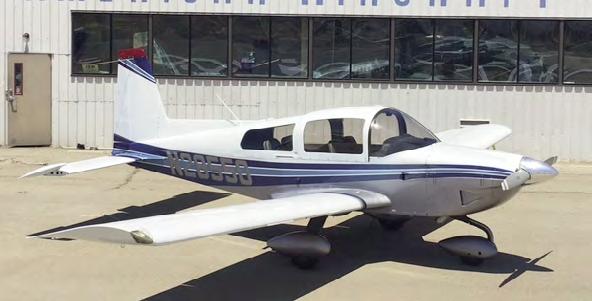





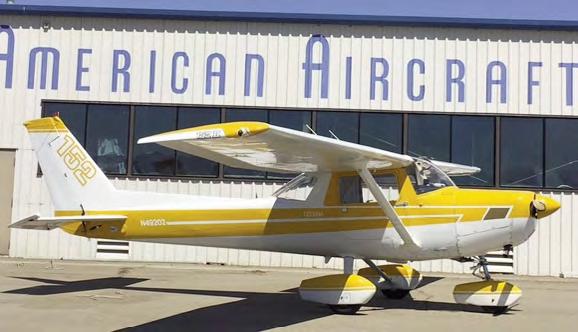

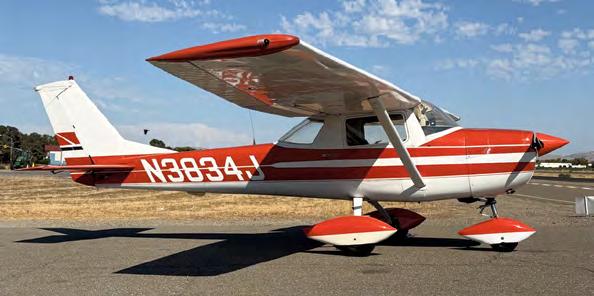



AIRCRAFT FOR SALE
American Aircraft Sales, Livermore Airport, CA, americanaircraft.net, cell (510) 783-2711, (925) 449-5151. 3/13
From Trade-ins to Aircraft Management, financing and appraisals. T.J. Aircraft Sales, Novato, CA, (415) 898-5151, tjair.com. 3/13
AirplanesUSA Aircraft Sales, San Carlos, CA, Airport, (650) 394-7610, airplanesusa.com. 1/16
Quality aircraft since 1948. Volare Air, a TECNAM dealership, (940) 800-8020, volareair.aero. 1/23
Historically significant 1950s-era aircraft for sale or trade. All in restorable condition with minimum corrosion. Inventory includes a Piasecki XHJP-1 and a Sikorsky S-55. American Helicopter Museum, West Chester, PA. Contact info@ americanhelicopter.museum for more information. 231000.TFN
1968 Nanchang CJ-6 Chinese warbird. Reliable Day/VFR, light weight. Apollo GX-65 nav/com, Digital Xpndr., intercom, Delco alternator. New seat cushions and canopy glass. Includes all support equipment, wing jacks, manu- als, spare parts. Much more! $70,000. Located N. Calif., text/cell (530) 957-9760, dennis@nickson.biz. 24900:11
1966 Piper PA30 Twin Camanche for sale near Oceanside, CA. Call for pricing. Andrew Wignot, (760) 717-0640. 241100:12
Small Manned Aerial Radar Target, Model 1. Tiny jet aircraft, long-range tank. SMART-1, Tucson, AZ, (202) 2132400, smart-1.us. 5/21
RV12i5. Total performance perfected. Easy to build, fly and own. Van’s Aircraft www.vansaircraft.com. 11/18
Bristell LSA 915 Turbo, 180 mph @18,000. Bristell Aircraft, (516) 658-1847. bristellaircraft.com. 2/24
The STOL Super Breezy with fully covered fuselage. Yakima Aerosport, (509) 453-3412, superbreezy.com. 5/23
AIRCRAFT SALES AIDS
Aviation Sales & Marketing by ABCI. Ideal for a startup or side hustle in the aviation industry. (702) 987-1679 or aviationsalestraining.com/startup. 1/21
FLIGHT INSTRUCTION
Sunshine Flyers. Flight & tailwheel instruction, rentals, mountain flying, and aerobatics., Auburn, CA, (530) 820-3442, sunshineflyersaviation@gmail.com. 3/20
Arizona Type Ratings
CE-500/CE-525 type ratings or recurrent. Insurance approved, staff examiner. arizonatyperatings.com, (602) 614-7994. 9309:TFN Recurrent pilot training and services. L/D Aerospace, Grace Passmore, (916) 790-0501, ldaerospace.com. 1/22
Fly for fun or career. Discovery flights, pilot training, AOPA Distinguished Flight School & Cessna Pilot Center. Smith Aviation, Napa County Airport, (707) 3456526, mikesmithaviation.com. 4/22
Come fly with us! CFIs encouraged to apply. For more information, call Sue Clark/RV to the Rescue at 925-997-4778
XL Aviation - Aircraft Maintenance.
Custom-tailored programs for all aircraft. Livermore, CA, (925) 961-6135, xlaviationtailwheel.com. 8/20
Iconic Aircraft Restoration. Repairs, refurbishments, parts fabricated, consulting at reasonable rates. The Wright Experience, (540) 379-9092. 8/21
Custom aircraft & high-quality composite parts. Aviation Composites, Sandersville, GA, (937) 243-7303. 1/22
Serving the GA Community since 1981. Wisconsin Aviation, Watertown Municipal Airport, WI, (920) 261-4567, WisconsinAviation.com. 3/13
World’s largest network of FBOs with over 200 locations offering consistent, exceptional service. Signature Flight Support, signatureflight.com. 4/23
Full-service center. Vista Aviation, Whiteman Airport, Pacoima, CA, (818) 896-5224, vistaair.com 9/23
Avionics for Every Mission. All major brands. Airtronics, Calaveras County Airport, CA, airtronicsavionics.com, (209) 736-9400. 11/14
Basic installs to complete panel and glass retrofits. Pacific Coast Avionics, (800) 353-0370, PCA.aero. 7/15
Update your avionics. FAA-Certified repair station. Treasure Coast Avionics, Ft. Pierce, FL, (772) 464-3148, treasurecoastavionics.com. 2/23
AIRCRAFT PARTS
Keeping “classic” aircraft flying since 1946. Univair Aircraft Corp., Aurora, CO, (888) 433-5433, univair.com. 3/21
Iconic Aircraft Restoration for all the classics. Reasonable rates. The Wright Experience, (540) 347-1909. 2/23 SAVAGE Magneto Service since 1946. Hayward, CA, (510) 782-7081, 2/23
Wingtips with total lighting solutions, aveoengineering.com. 9/23
Aviation wood, composite or metal propellers. Sensenich, (813) 752-3711, (717) 569-0435 or sensenich.com. 4/21
OXYGEN SUPPLIES
Cannula or Mask? For aircraft service ceil- ings to FL180 & FL250. Ask “The Oxygen Lady,” info@aviationoxygen.com 4720:TFN 2/23

Fuel Cells. Repair, overhaul or new with 10-year warranty. Hartwig Aircraft Fuel Cell
AVIATION SAFETY
Innovative aviation safety solutions and Parachute Recovery Systems for a variety of aircraft, including for sport, UAVs, more. AviationSafetyResources.com. 2/22
Get ahead of your daily in-flight risks with SAFETYLINQ flight risk assessment. argus.aero/safetylinq. 1/22
Get Top Retail Value for Your Aircraft! Sell now! Find your dream aircraft! Shop now! Become an area broker with one of the largest networks in the U.S.! Visit our USA Aircraft Brokers page on Facebook or visit usaaircraft.com. 9/23
Specializing in personal, business and charter aircraft. Best price, cover- age & customer service. Zanette Aircraft Insurance Center, (650) 593-3030, (888) 7233358. 10/06
Insurance solutions for all aviation-related services. Business Aviation Insurance, bizavins.com, (925) 825-1900. 7/20
AVIATION CONSULTANTS
Informed, accurate aircraft appraisals. jetvaluesjeremy.com, (636) 751-3987. 7/20
Complete Aviation Sales & Marketing Services. Use Promo Code “INFLIGHT” to save 10%. AviationBusinessConsultants.com/Lab, (702) 987-1679. 4/23
No cheap imitation watches at HME! Special pricing on ATP series multi- functional watches with Altimeter. To order or for information, (323) 464-6660 or hmewatch.com. 11/16
Aircraft Spruce & Specialty. Free 700page catalog, Corona, CA, & Peachtree City, GA, aircraftspruce.com. 10/06
Protective covers for every make and model. Bruce’s Custom Covers, Morgan Hill, CA, (800) 777-6405, (408) 738-3959, aircraftcovers.com.10/19
Apparel as unique as your journey. Discounts to members. AOPA Pilot Gear, aopapilotgear.com. 9/21
Mountain Bike, Full-size, pilot-friendly, rugged. FLATBIKE, flatbike.com. 10/18
AVIATION RESOURCES
Emergency services, group trips, consulting services. BizAvJets, Inc., Business Aviation Services, bizavjets.com, (702) 465-2027. 10/20
Wherever business takes you. Navigate It. (575) 615-2091, vatit.com. 10/21
Scheduling Software that connects to your flight department. Simple, affordable. airplanemanager.com. 9/22
PROFESSIONAL SERVICES
Aero & Marine Tax Pros
Legally avoid sales tax on your aircraft purchase. In El Grove, CA, (916) 691-9192, aeromarinetaxpros.com. 18500:TFN
Left Seat Pilot Medical Solutions. A confidential solution for pilot medical certification. Free FAA medical consultations. Left Seat, (800) 699-4457. 1/21 Global Aircraft Group. USPAP bank values for all aircraft, aircraft management, insurance claims & certified aircraft appraisals. Mark Parry, (855) 6GBL- AIR, (413) 335-7507. 4/22
At Thirty1 Hybrid, we help aviation companies, including flight schools, manufacturers, mechanics, brokers, and more, build a cohesive website that positively impacts their bottomline. And it’s not just a website — it’s an Experience. We’ll take your prospects on a journey they’ll love (and you’ll love, too — because the final destination is a new client and more money in your pocket). It’s a win-win for everyone! Contact us today at hello@thirty1hybrid. com or by visiting thirty1hybrid.com. 24500:6
One-piece doors. Hydraulic or bifold. Schweissdoors.com,(800)746-8273. 1/15
Aviation Building Systems, custom designed hangars. R&M Steel Co., Caldwell, ID, (208) 454-1800, aviationbuildingsystem.com, (866) 454-1800 51217:TFN
HOMES/AIRPARKS
New Runway & Taxiway Homesites Available in amentity-rich community, Granbury, TX. From $179,900. Pecan Plantation, AviationHomesites. com, (833) 273-2159. 2/24
Become an Aircraft Broker — #1 Largest USA Network of Aircraft Start with USA’s proved system for listing and selling everything from high-performance single-engine airplanes, cabin class through jets, and helicopters & jet fractional shares. Includes multi-million-dollar inventory to start. Complete turnkey proved system. No experience necessary. Will train. Licensed USA Aircraft brokerage. Call (504) 723-5566 or visit Business Opportunity Section at usaaircraft.com. 4208:TFN
Free avgas 100LL and free tie-down parking in exchange for help with projects for an airport in Southern California. Email: wignot@hotmail.com. 23600:TFN
ART/VIDEOS/GIFTS
Specializing in aviation photography. horizontalrain.com. 1/15
Need a gift? Give a ride in an open cockpit biplane. WACO Air Museum, Troy, Ohio, wacoairmuseum.org, (937) 3359226. 20601:TFN
Fly By Wire Air, a one-stop site for aviators.flybywireair.com. 4/21
Aces High Aviation & Military Art. (800) 528-0887, aceshighgallery.com. 10/21
Shirts Made to Fly. Unique, original fabrics embedded with your sectional chart. Save 20% with “INFLIGHT20” code. PilotQuarters.com. 2/24
Avionics Checklists & Quick Reference guides. Available in book, card & new iPad editions. qref.com. 8/14
SEAK, Expert Witness Directory, by Bert Botta for aviation accidents and incidents. (415) 320-9811, bert@bertbotta. com, bertbotta.com. 4/22
“Ghosts,” Phil Makanna’s legendary warbird calendars are back! Visit ghosts. com, (800) 331-8231. 2/23
New Pocket guide to avoid pain & stiffness during travel by a leading pain expert. “Pain-Free Vacation/Travel,” (980) 785-8128, goptfirst@gmail.com. 2/4
PILOT POSITION WANTED
SoCal pilot desires Turbine/Jet SIC time. Comm/Instru/Multi-Eng with SIC for Gulfstream G-IV and scores of hours in the Citation V560. Many years of aircraft design/ flight test/aerospace industry experience. Willing to travel as needed (and for repositioning). Contact Paul at (562) 714-6686 or ptglessner@ aol.com. 23700:TFN
HELP WANTED
IN FLIGHT USA, the leading source of general aviation news, seeks writers and photographers to cover all aspects of aviation. Send an SASE for writer’s guidelines to: In Flight USA, P.O. Box 5402, San Mateo, CA 94402. TFN
Oakland Aviation Museum recruiting volunteers. Oakland, CA, (510) 638-7100, oaklandaviationmuseum.org. 12/23
MUSEUMS








Unlike FAA Medical Examiners or other pilot groups, Pilot Medical Solutions activates our exceptional team of experts to confidentially support and resolve your FAA Medical certifications challenges.
Pilot Medical Solutions is the only service which collaborates with private physicians to produce documentation required by the FAA. Other services typically only list FAA requirements, Pilot Medical Solutions helps you comply with them.




"The professionals at Pilot Medical Solutions provide superior, pilot-focused services and help during your time of need. I would, without hesitation, recommend their services to an airman in need."
– Anthony Ison, Aviation Attorney
"Because they assist you in getting your records properly prepared and walking the information through the FAA, they can often accomplish in days what may take months for other sources, including your AME, to do."
– Erwin L. Samuelson, M.D
"I can strongly recommend Pilot Medical Solutions for consideration because they are sympathetic to pilots with medical certification problems. Pilot Medical Solutions also organizes the records which supports the FAA’s requirements."
– Bob Hoover
“They do

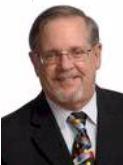
They

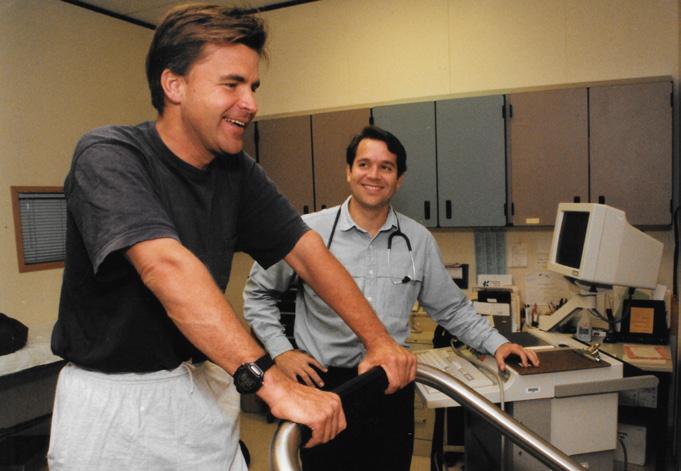
F l i g h t s d e p a r t f r o m o u r C h i n o A i r p o r t
l o c a t i o n f o r a 2 0 - m i n u t e f l i g h t t h a t y o u ’ l l
r e m e m b e r f o r y e a r s t o c o m e . F o r c o m p l e t e i n f o r m a t i o n v i s i t o u r w e b s i t e t o d a y .
